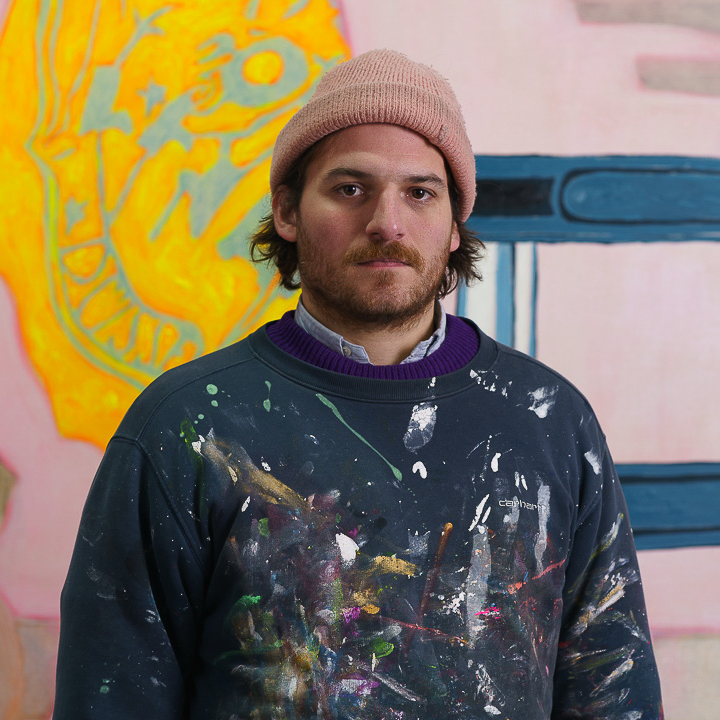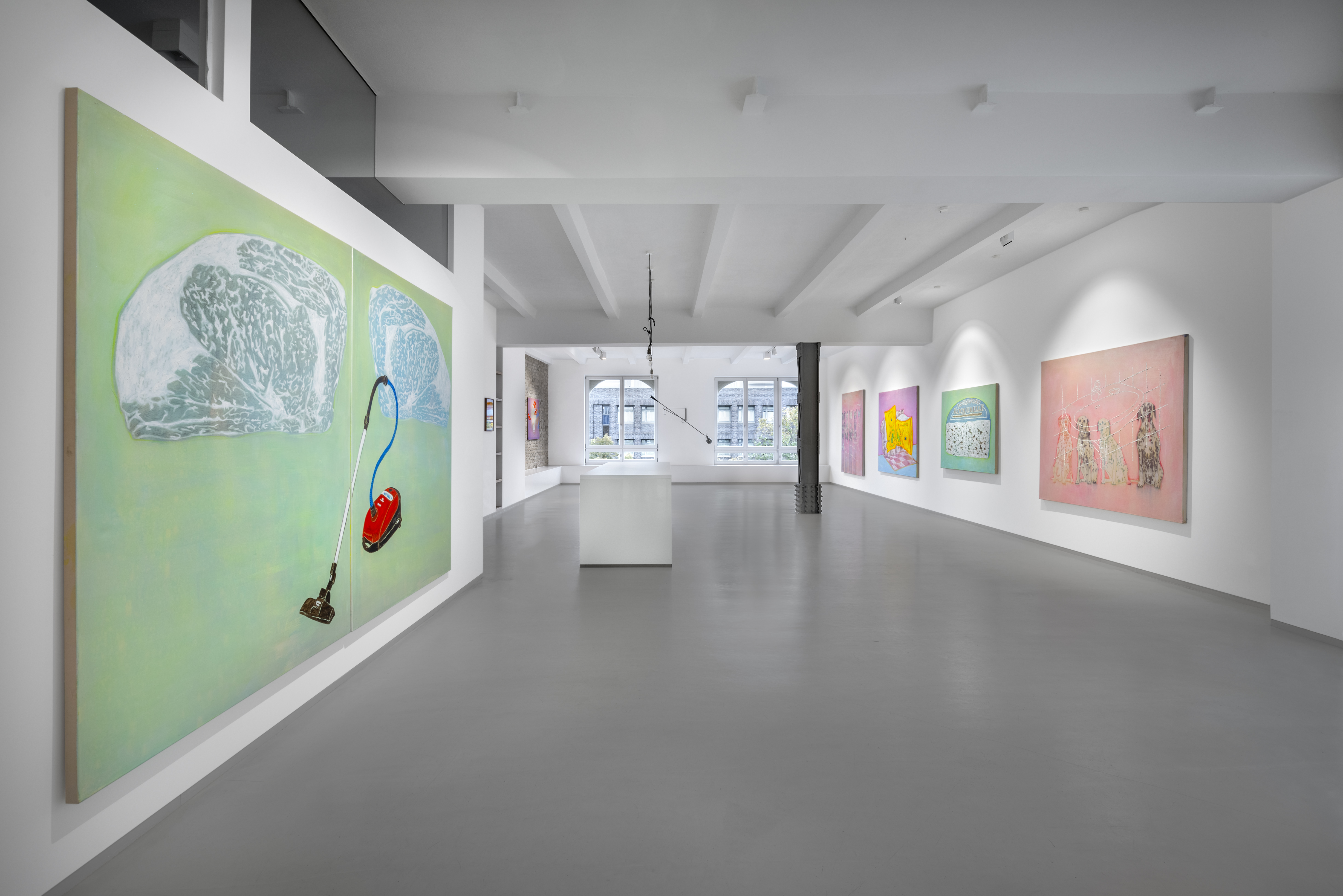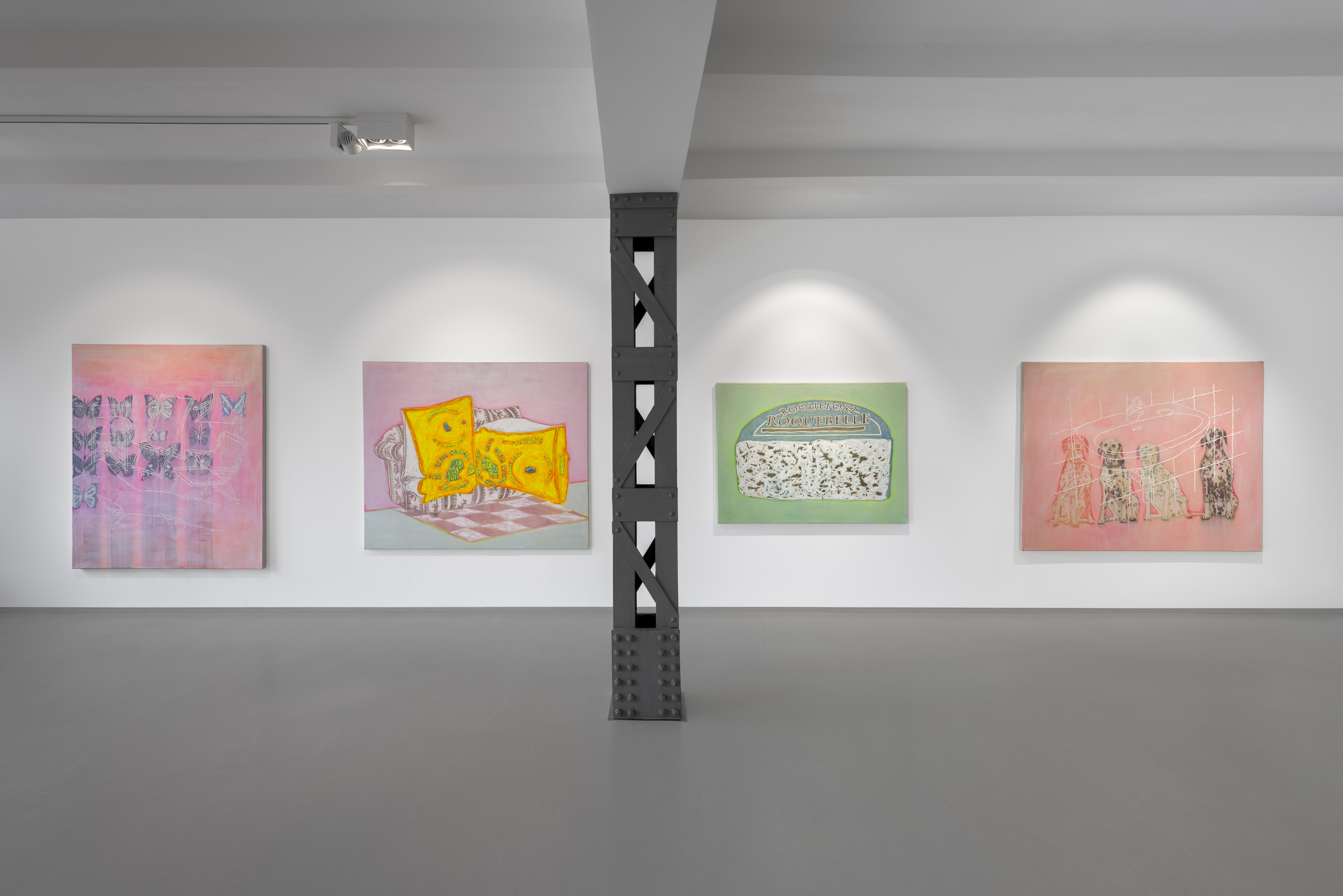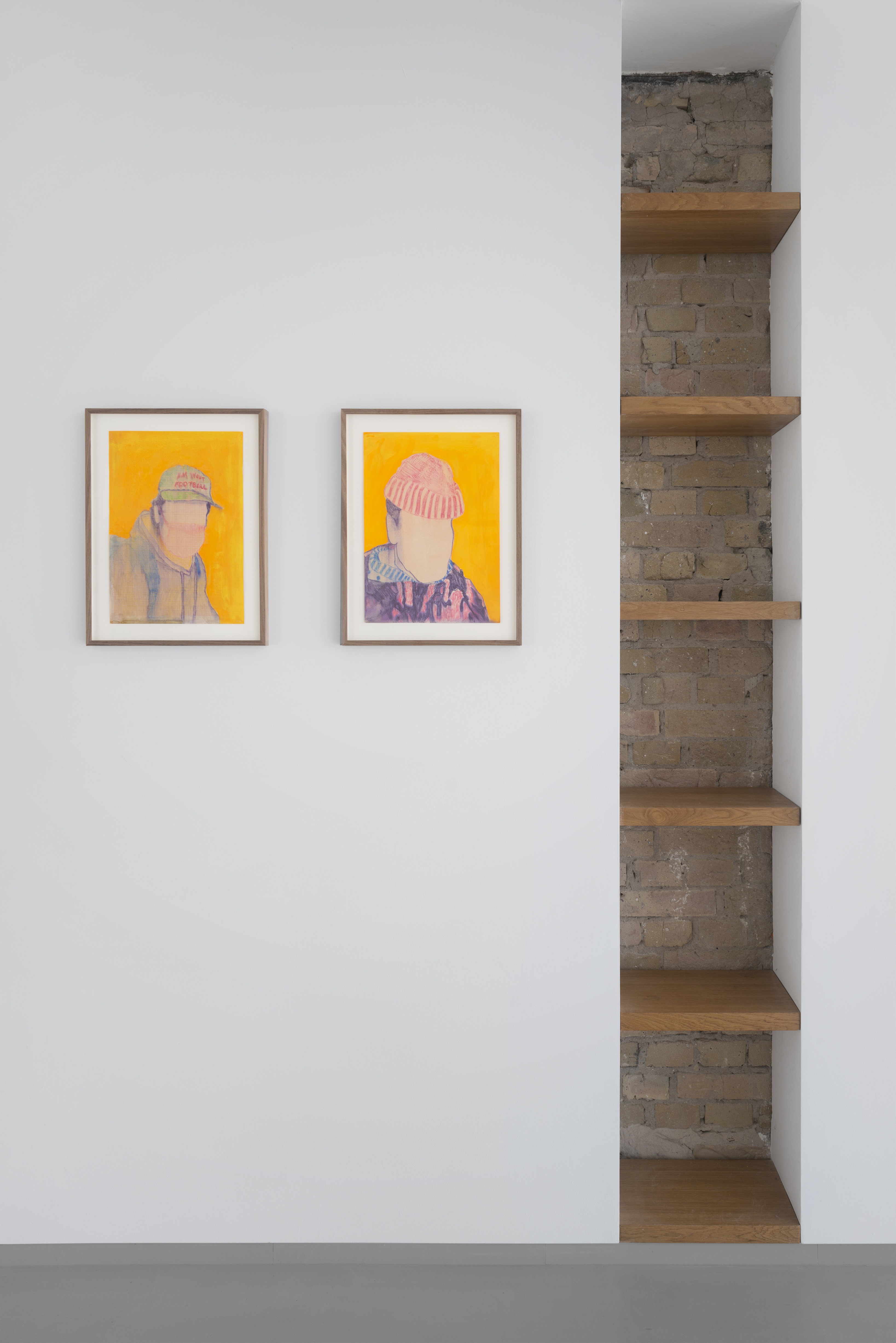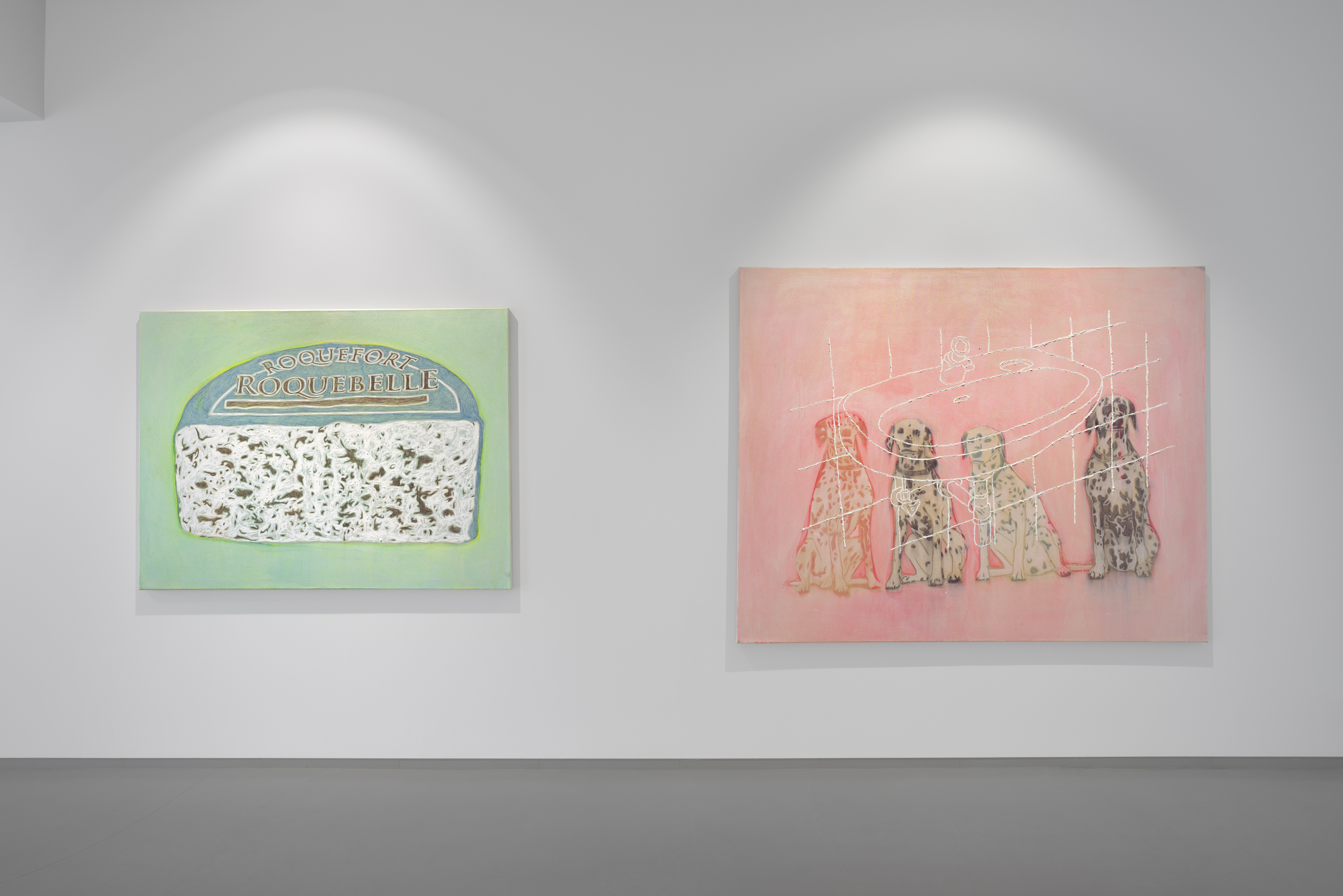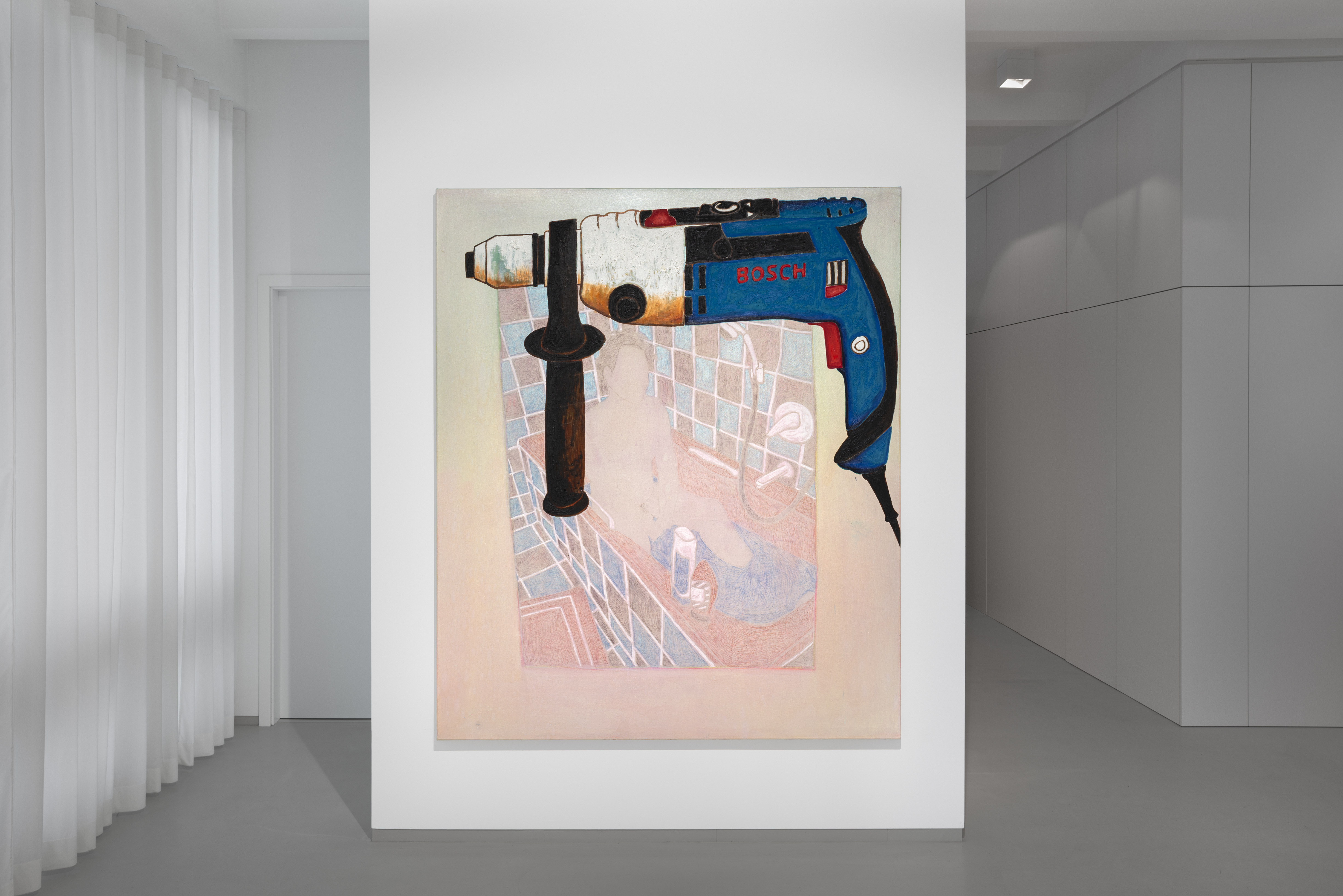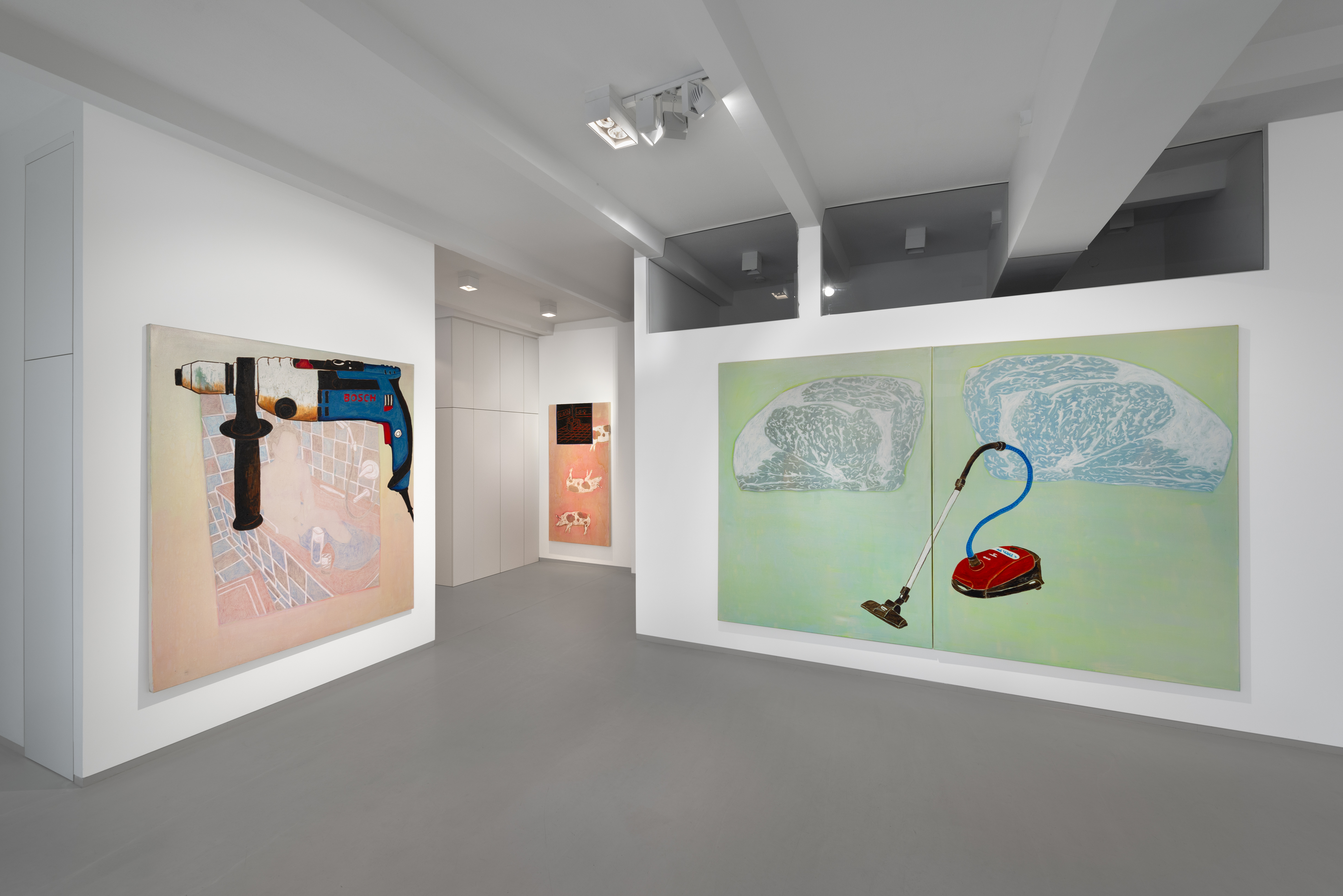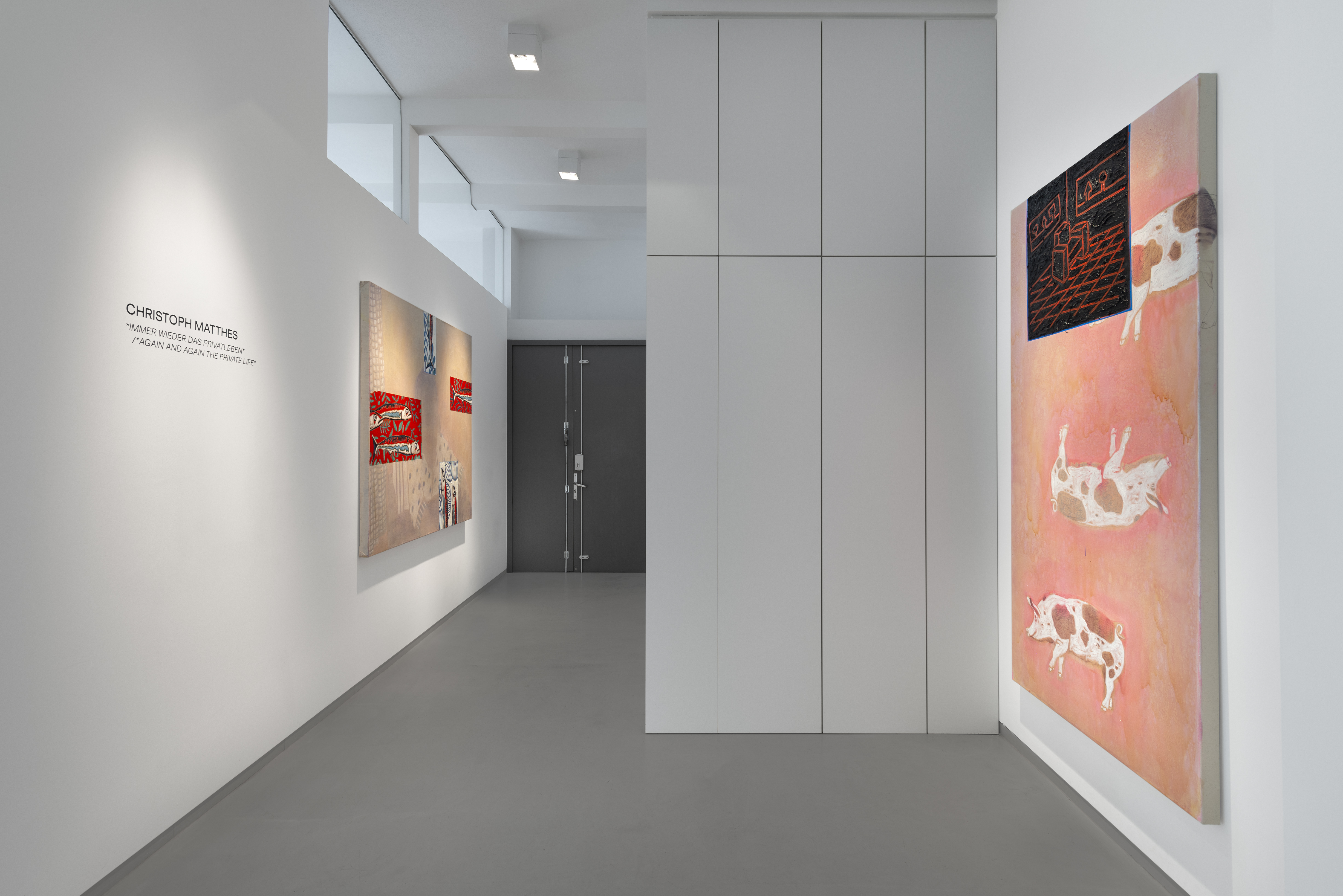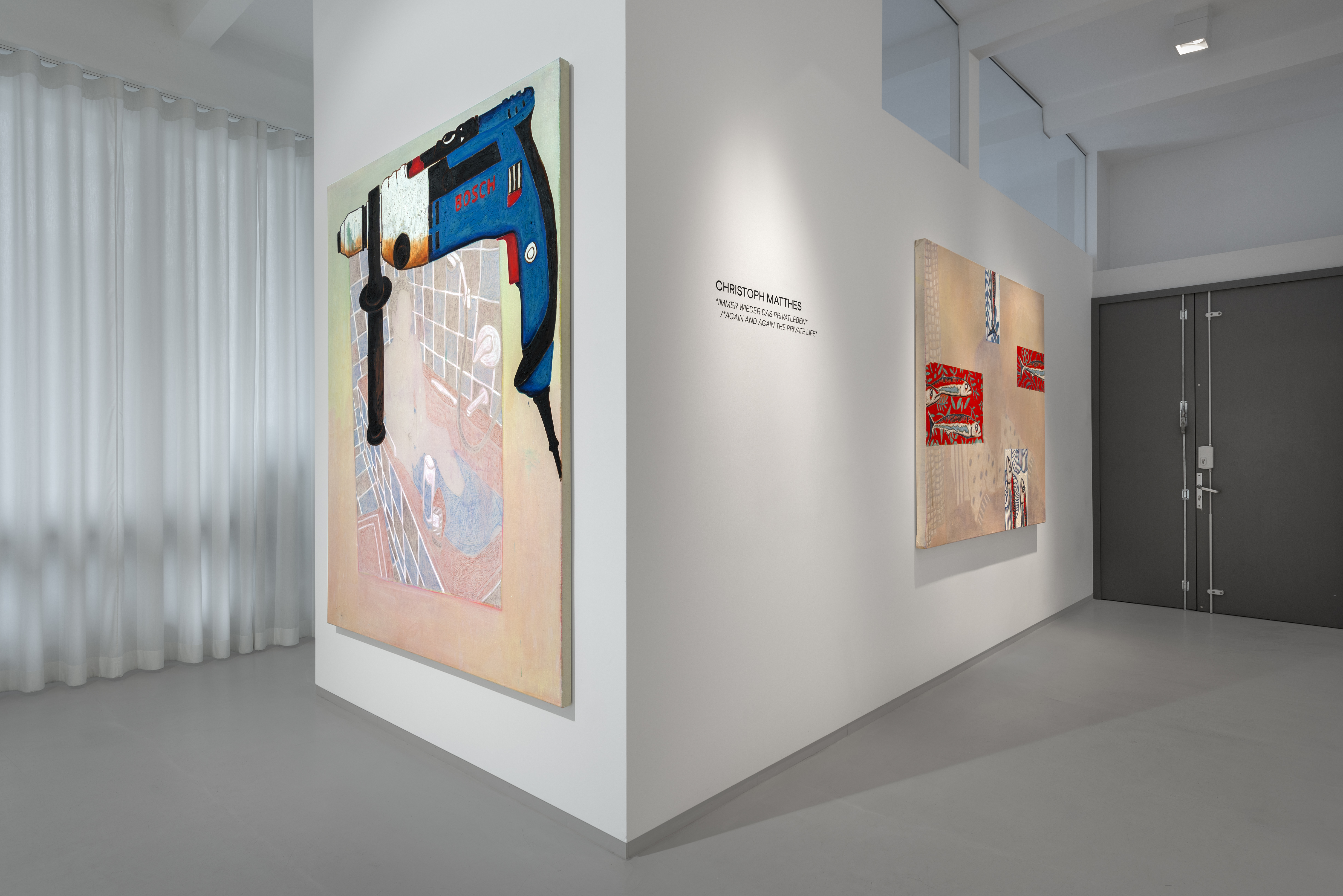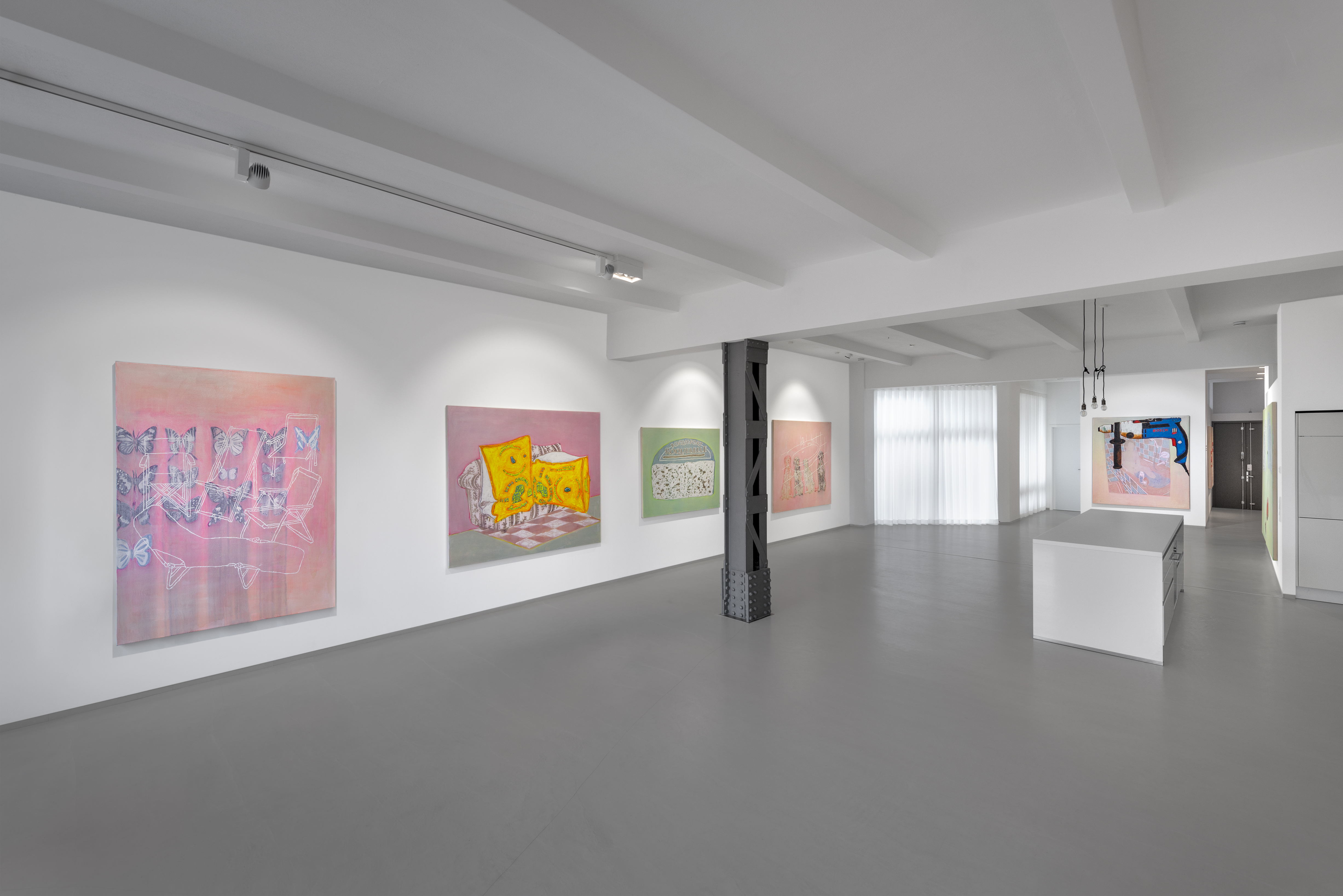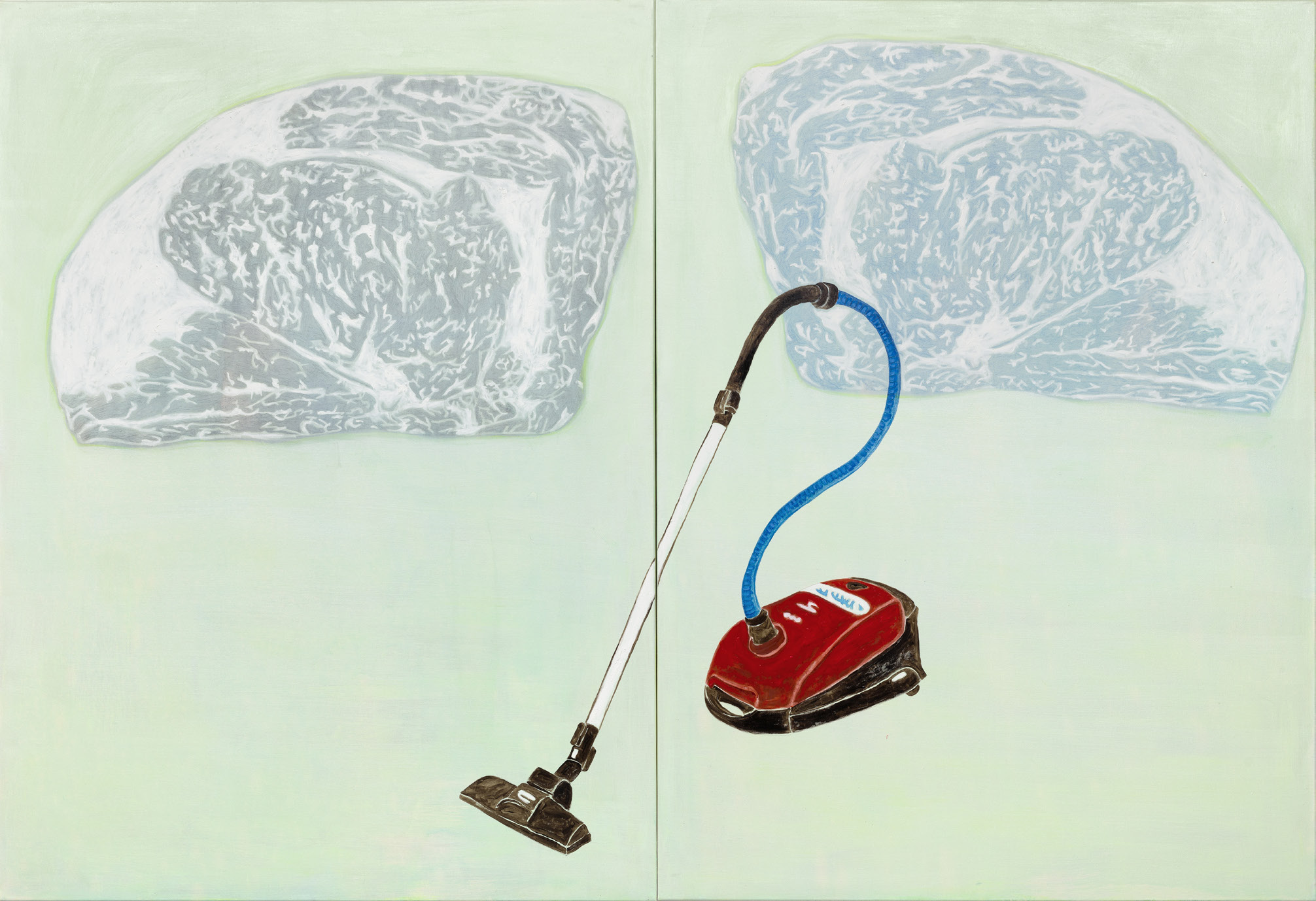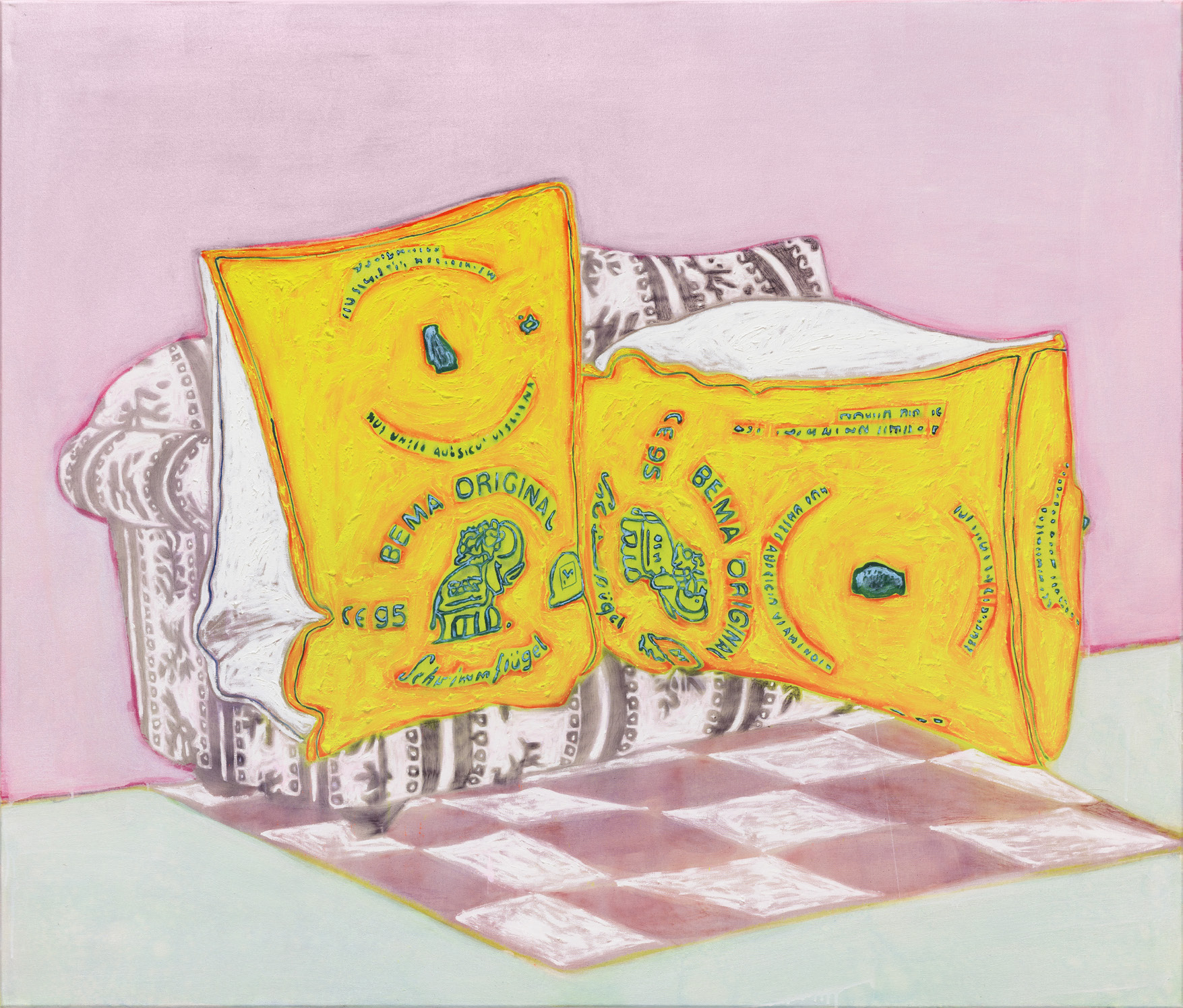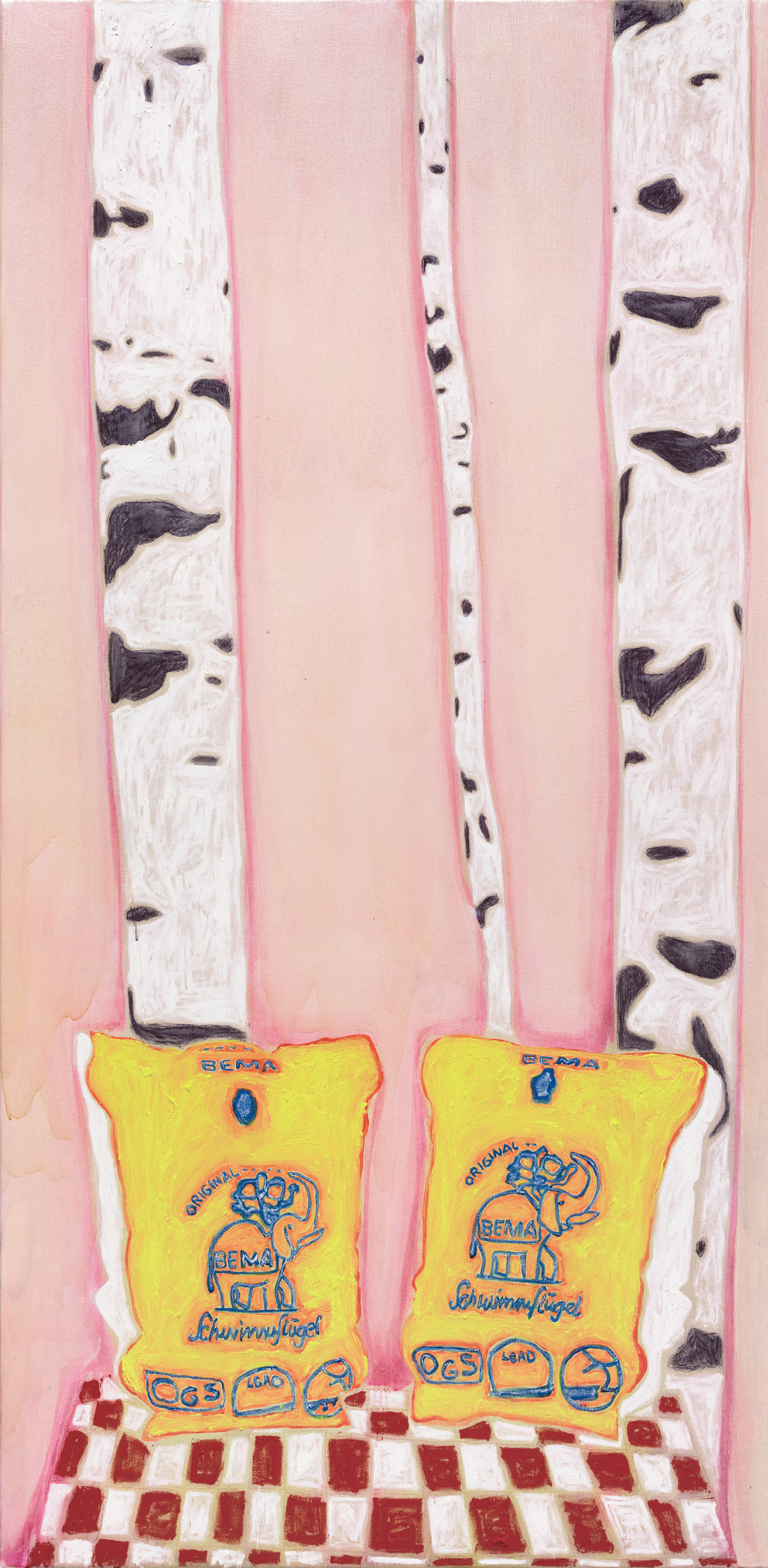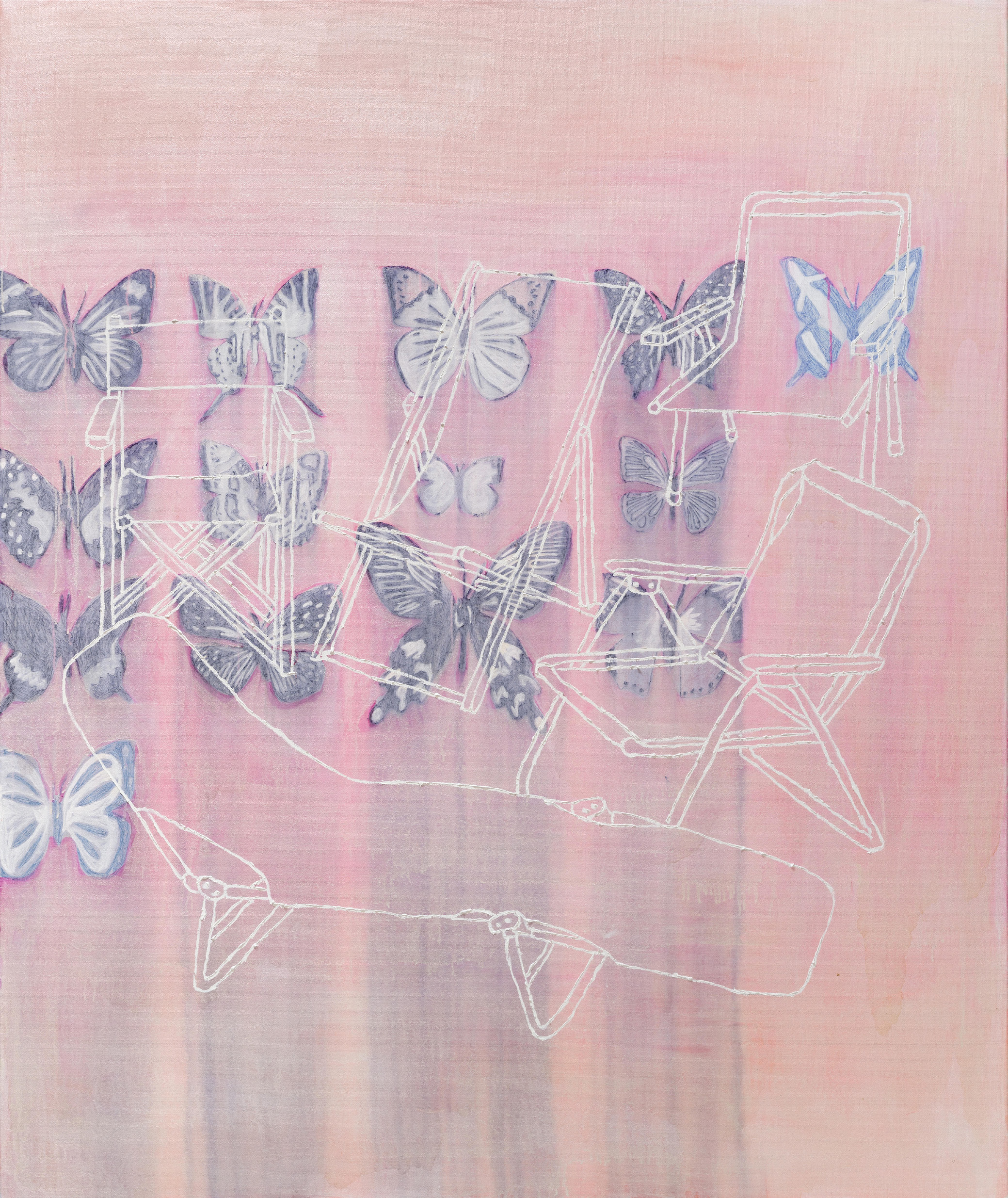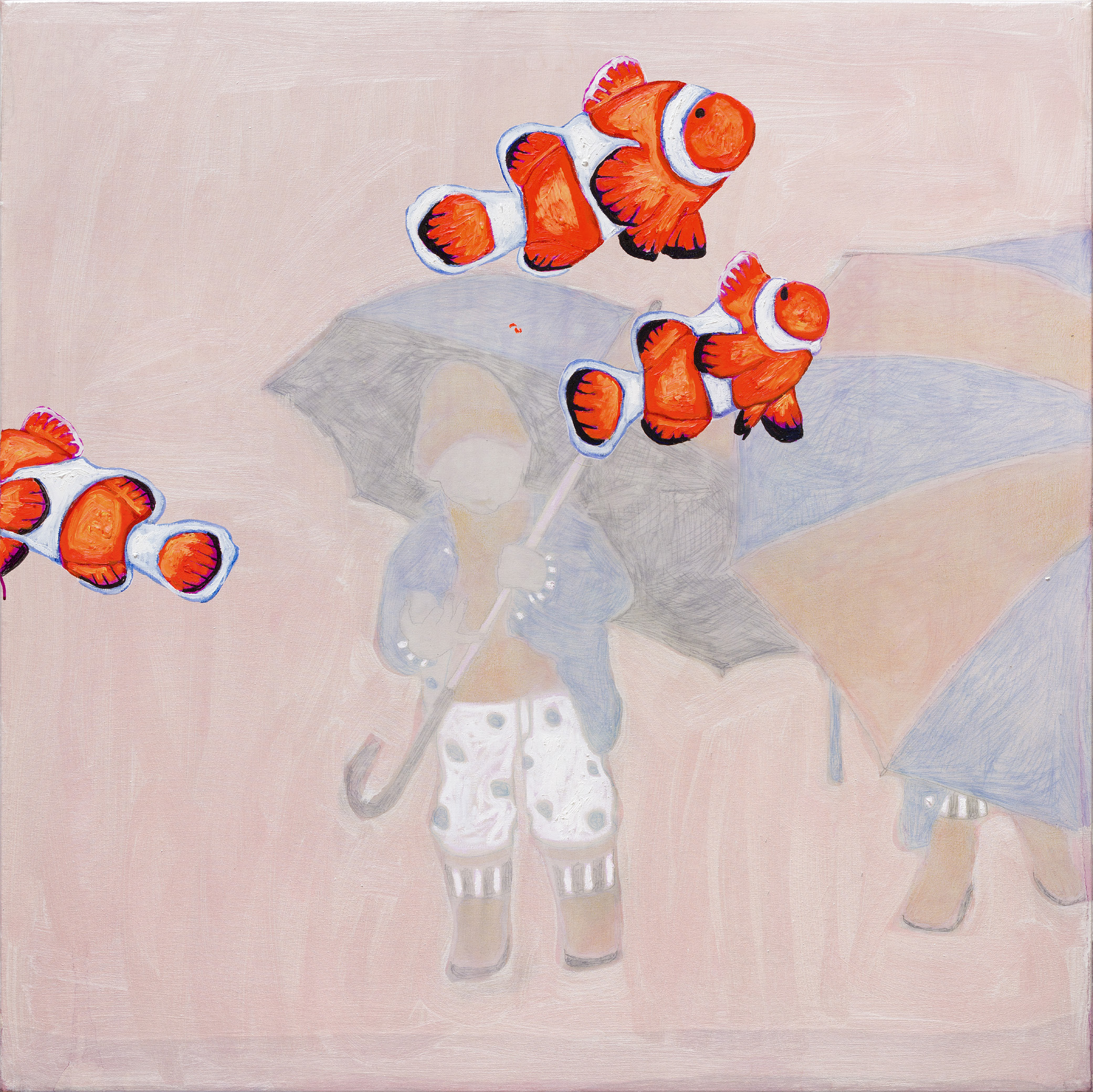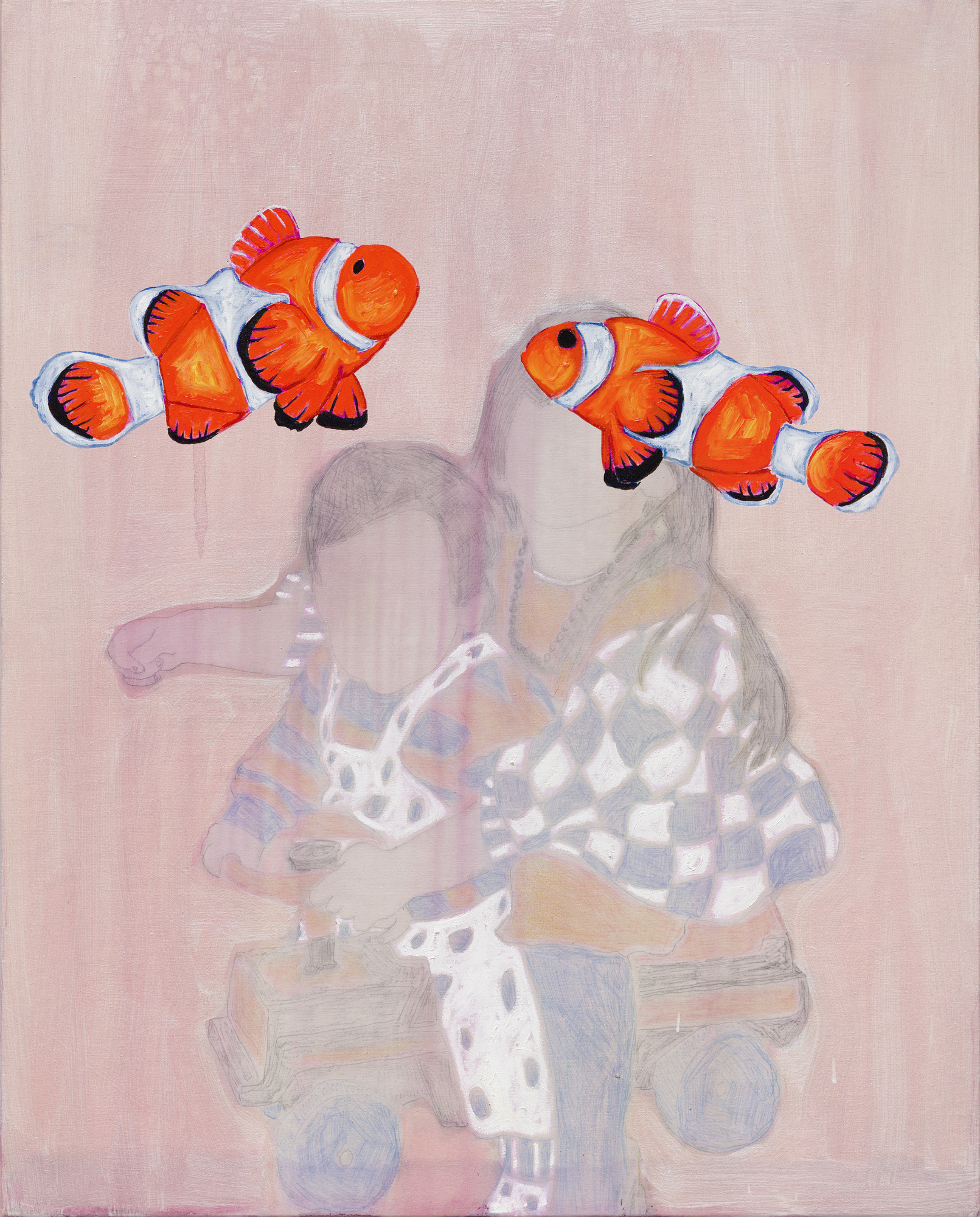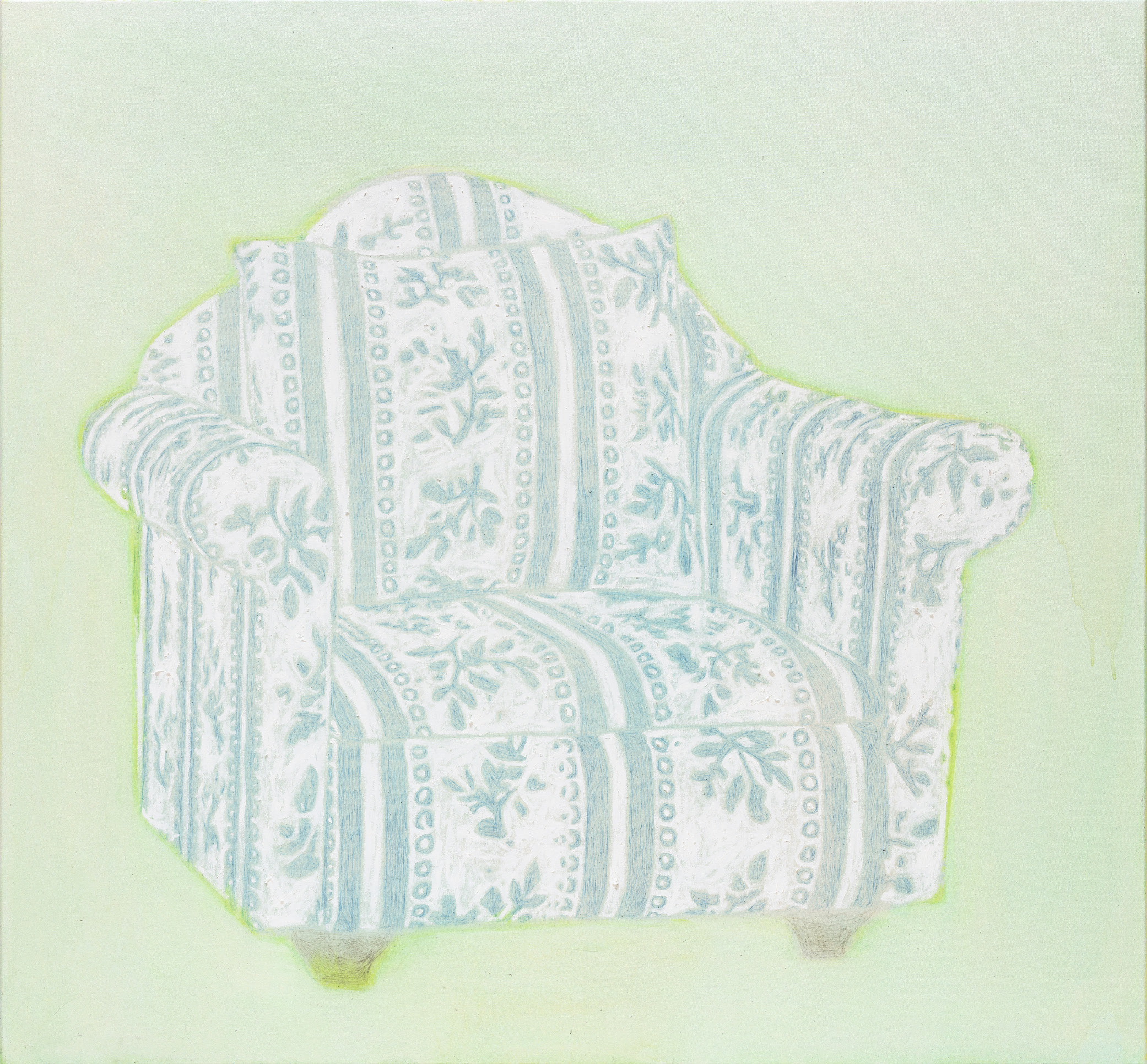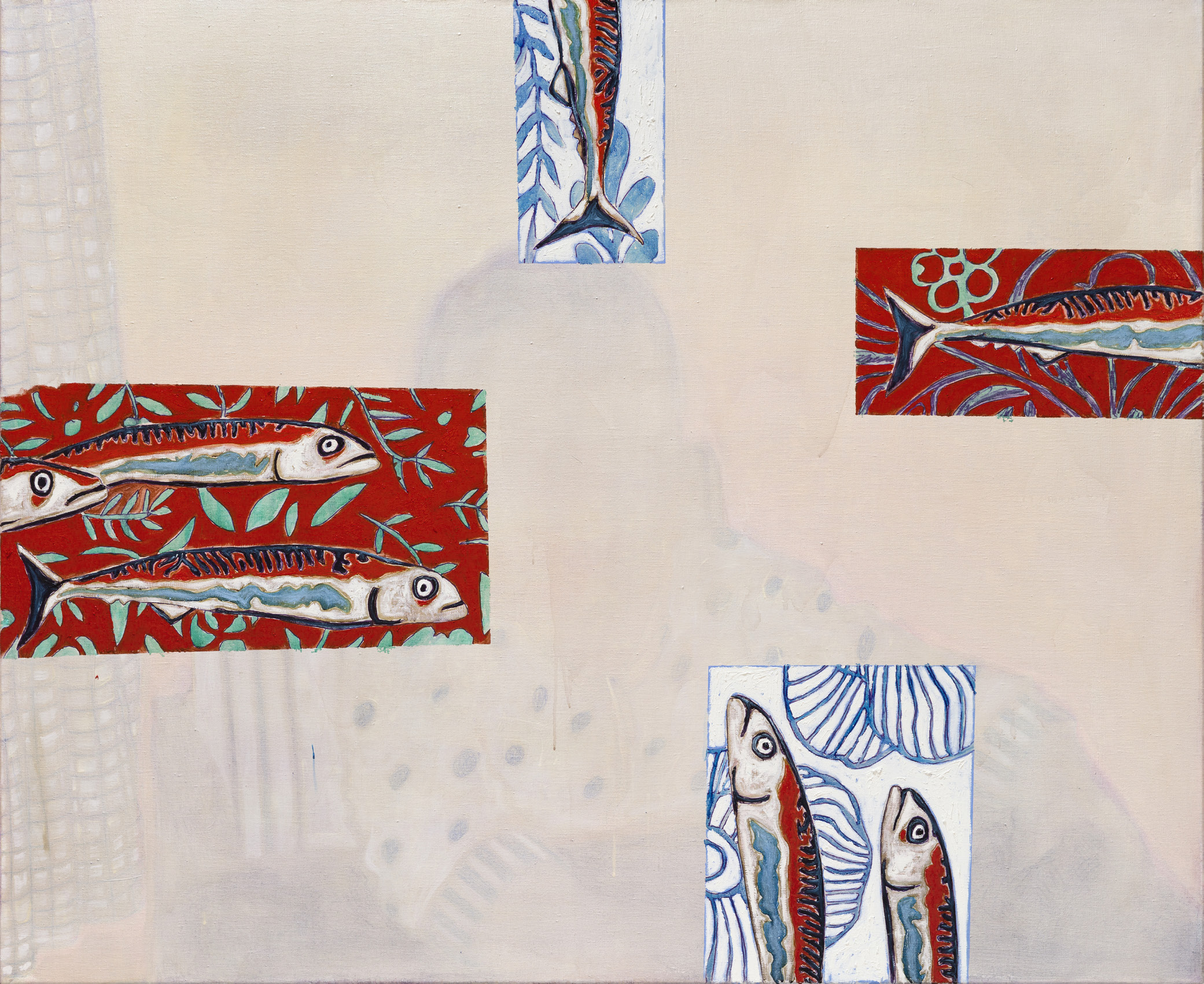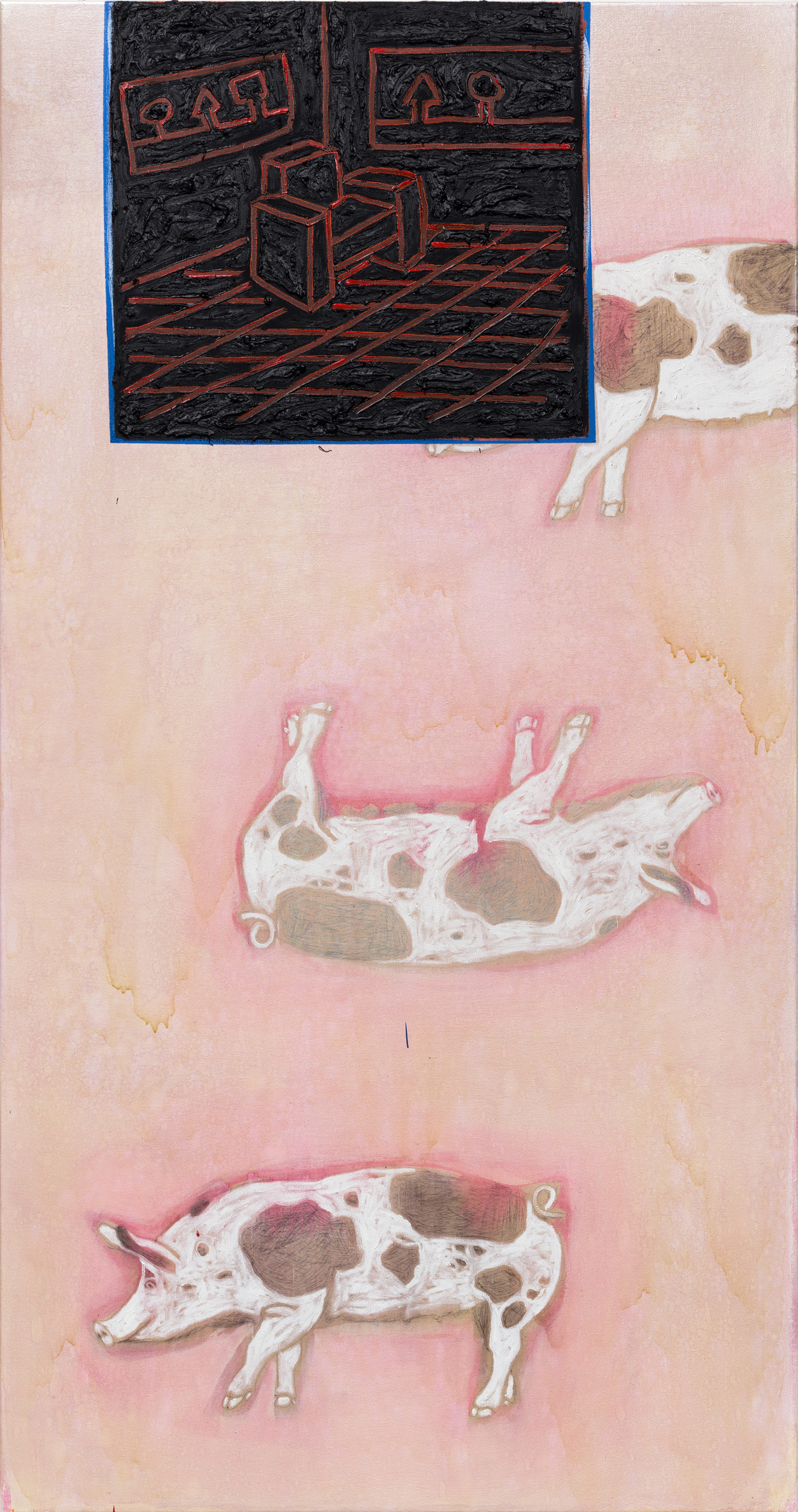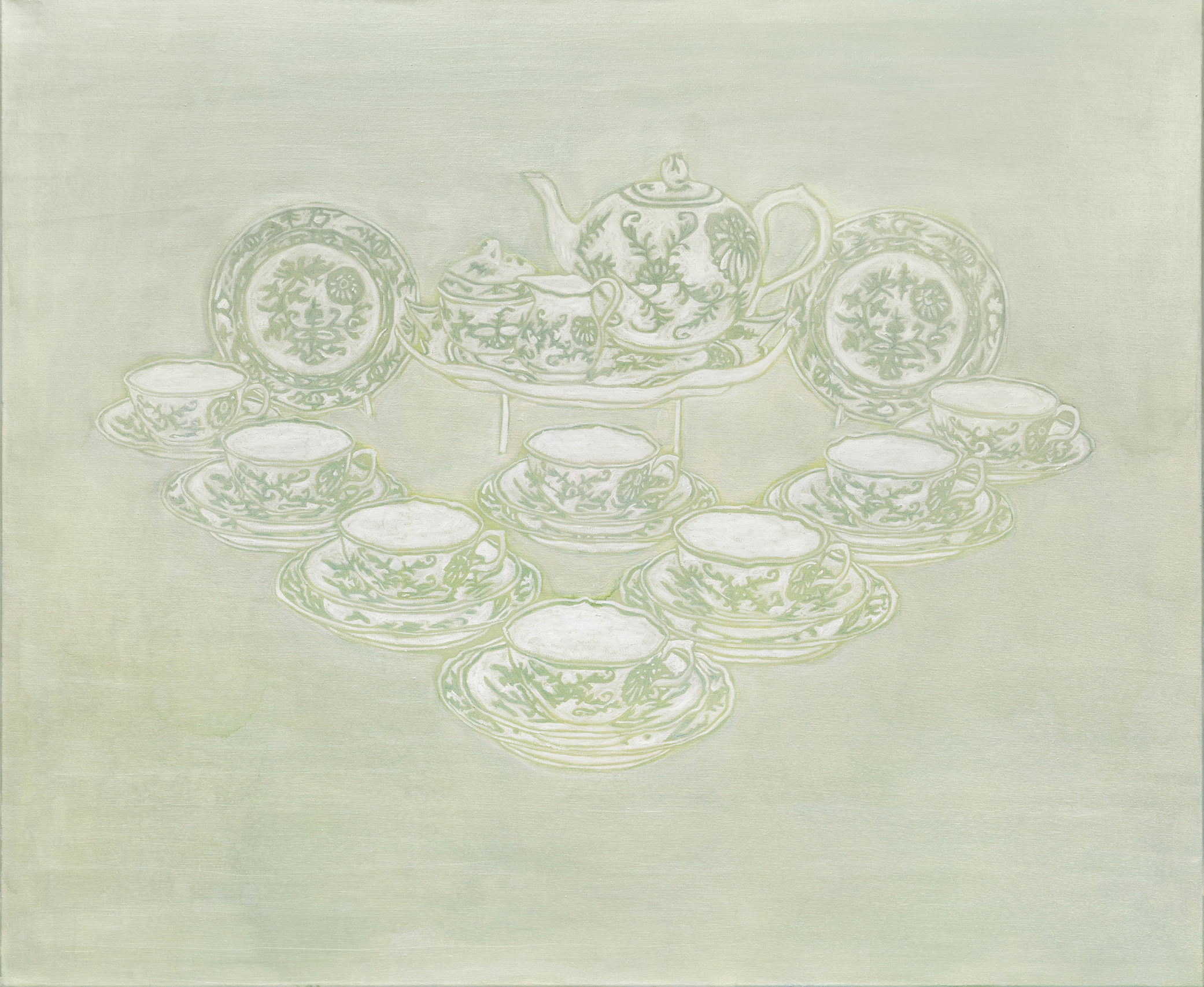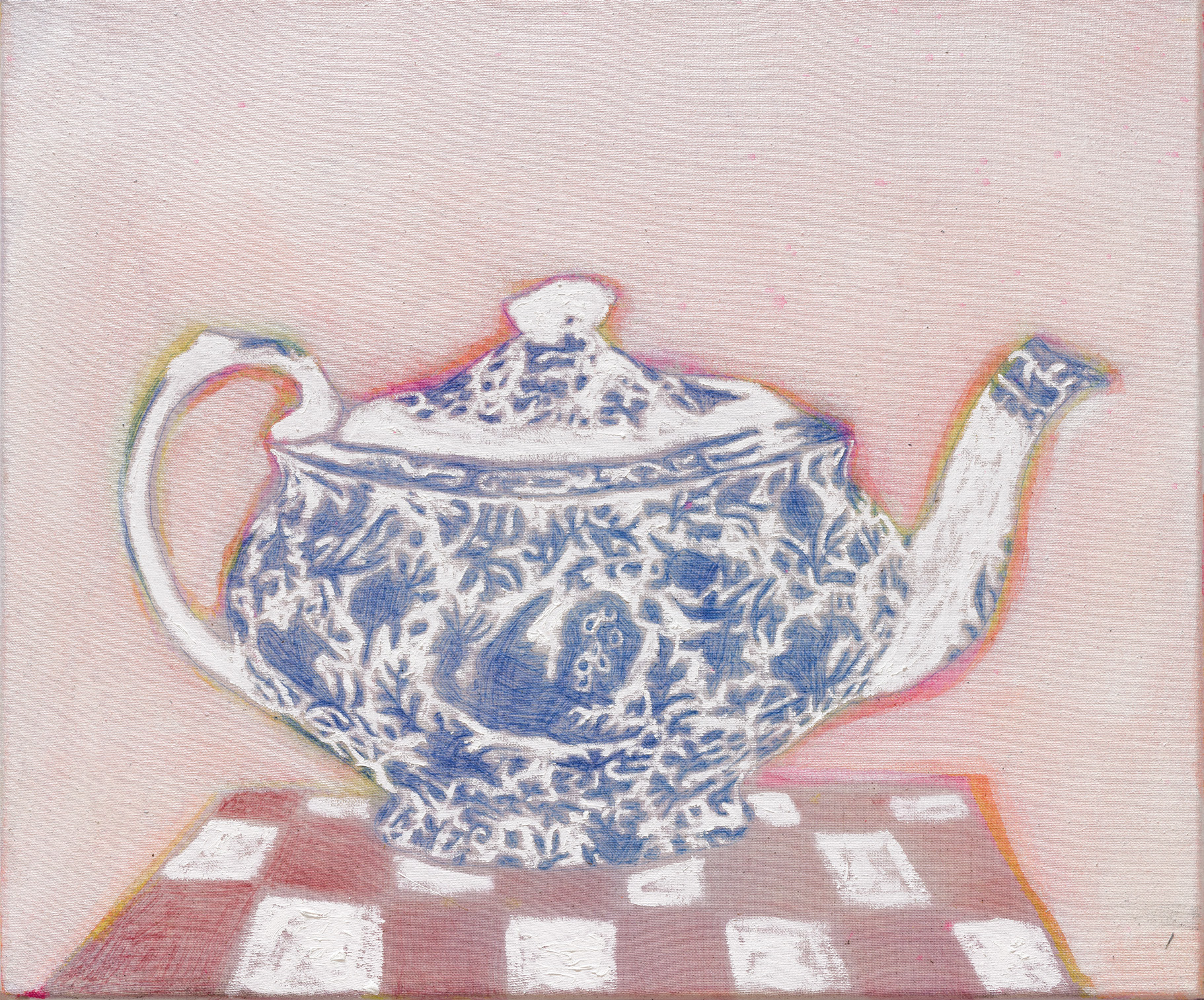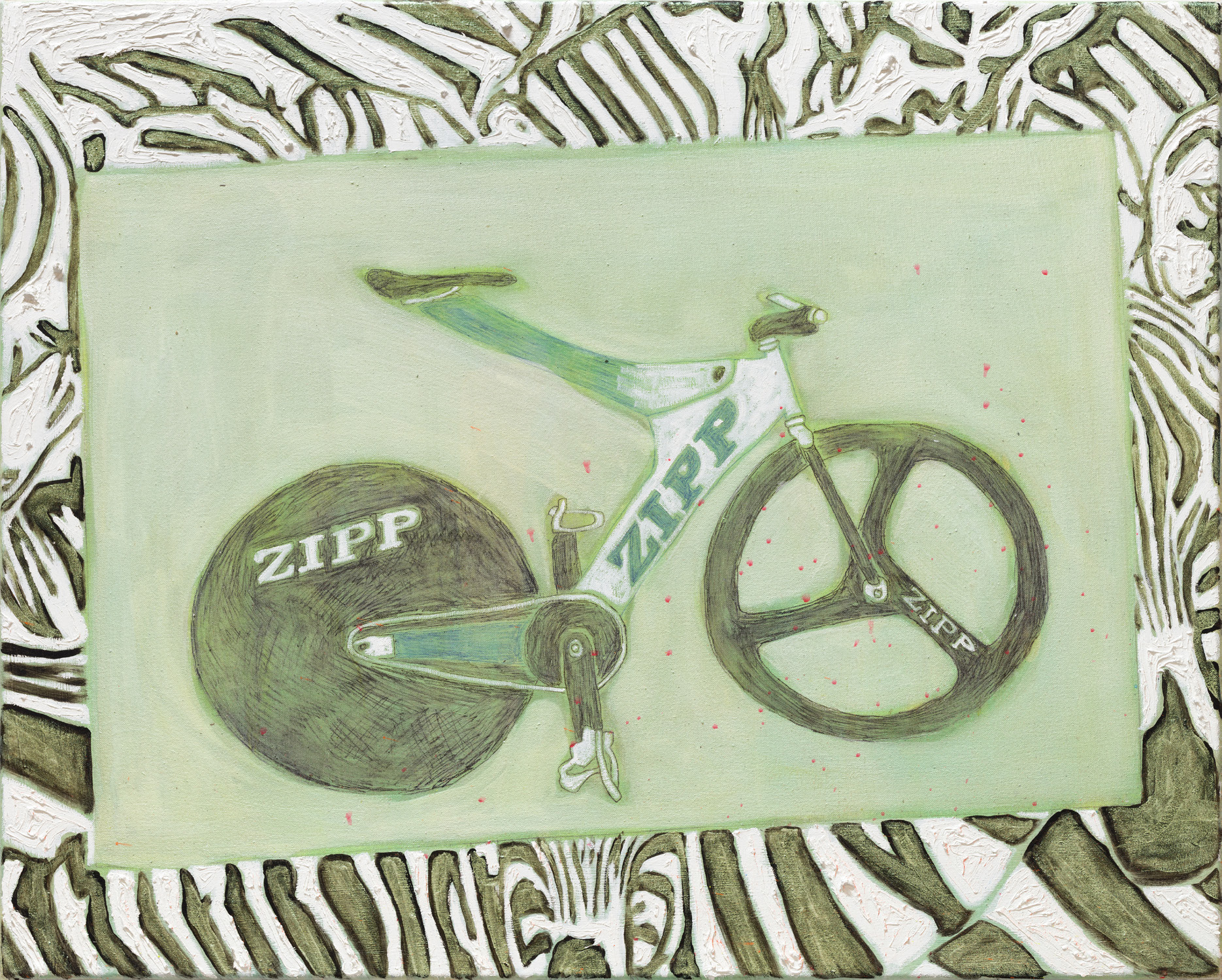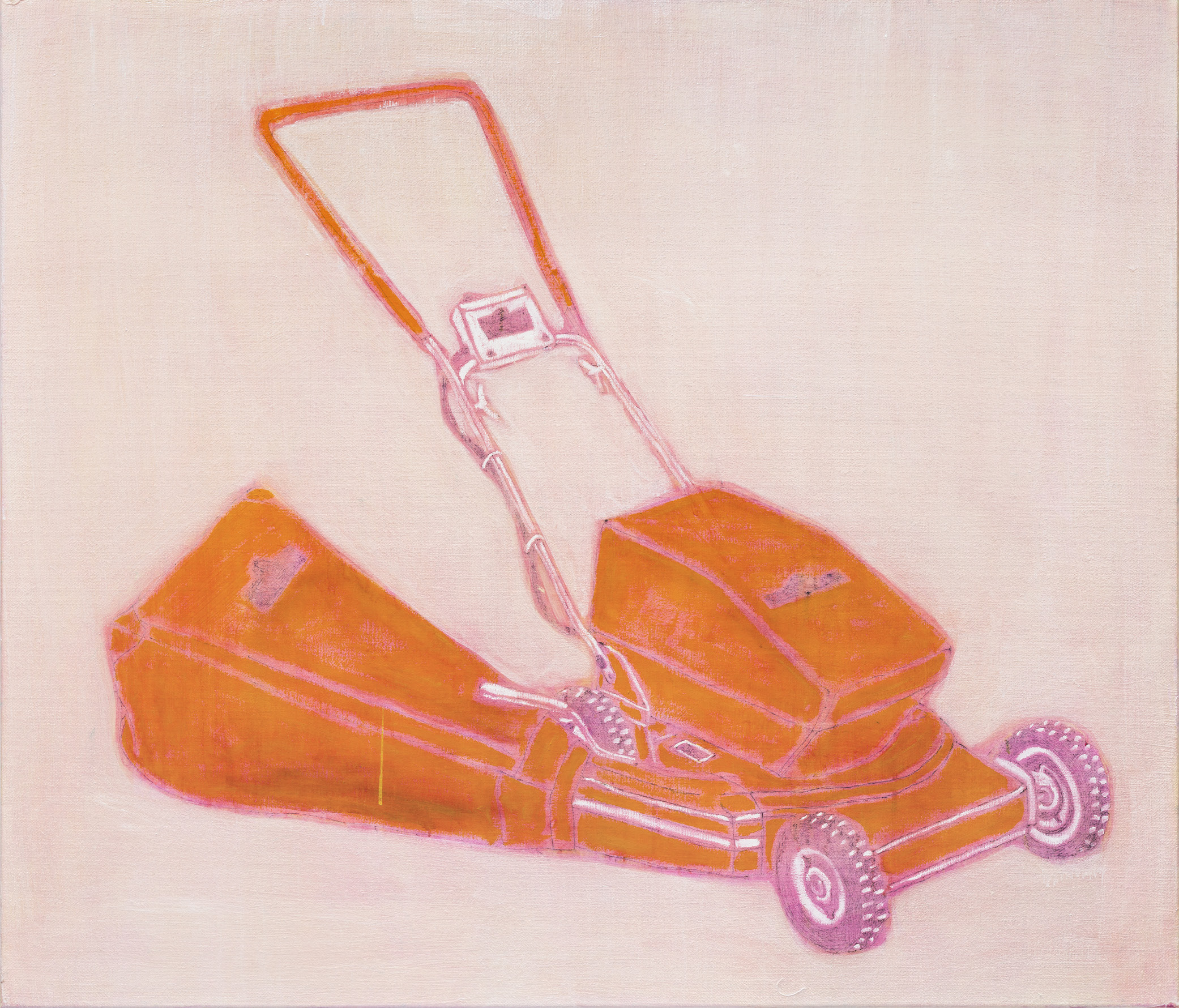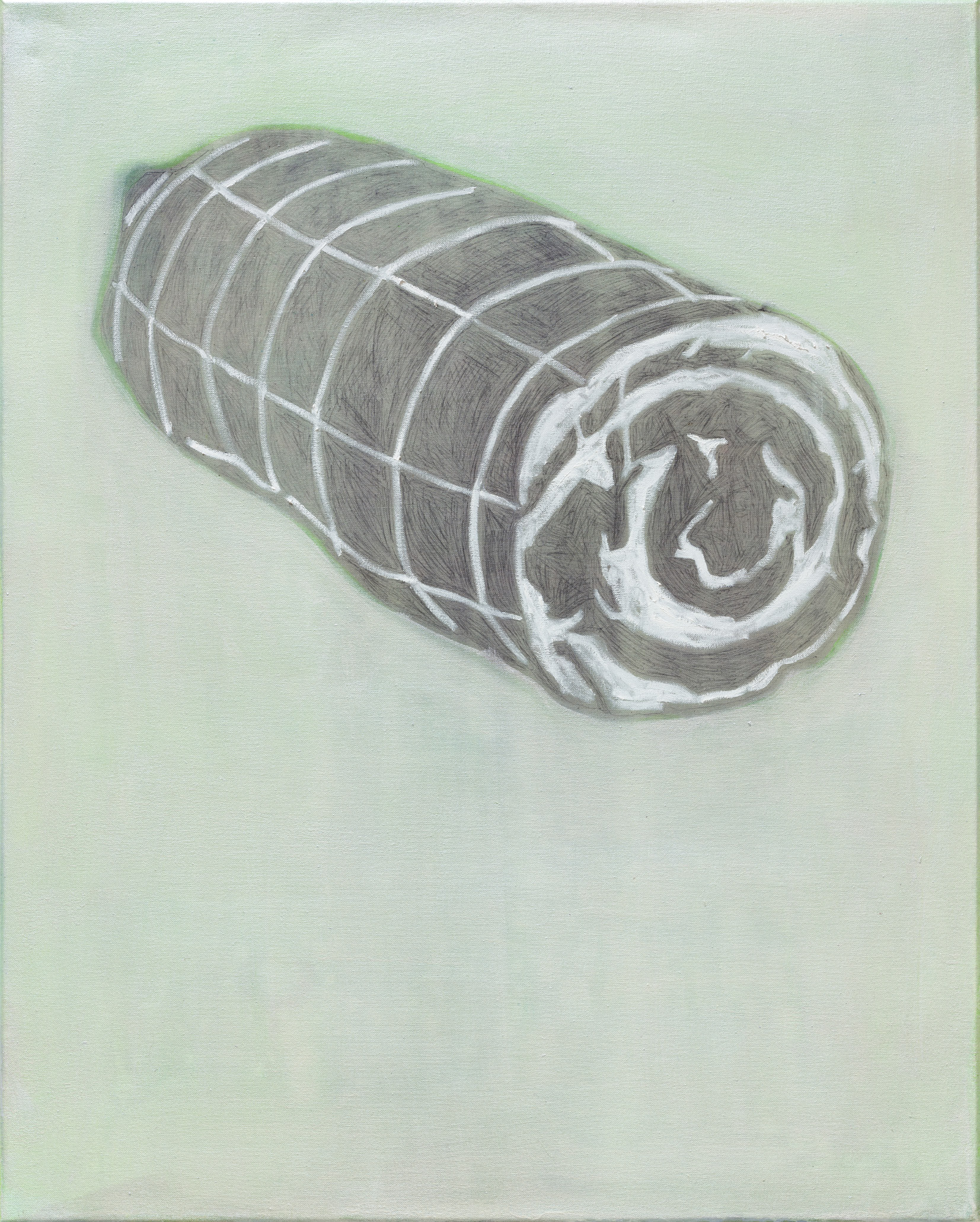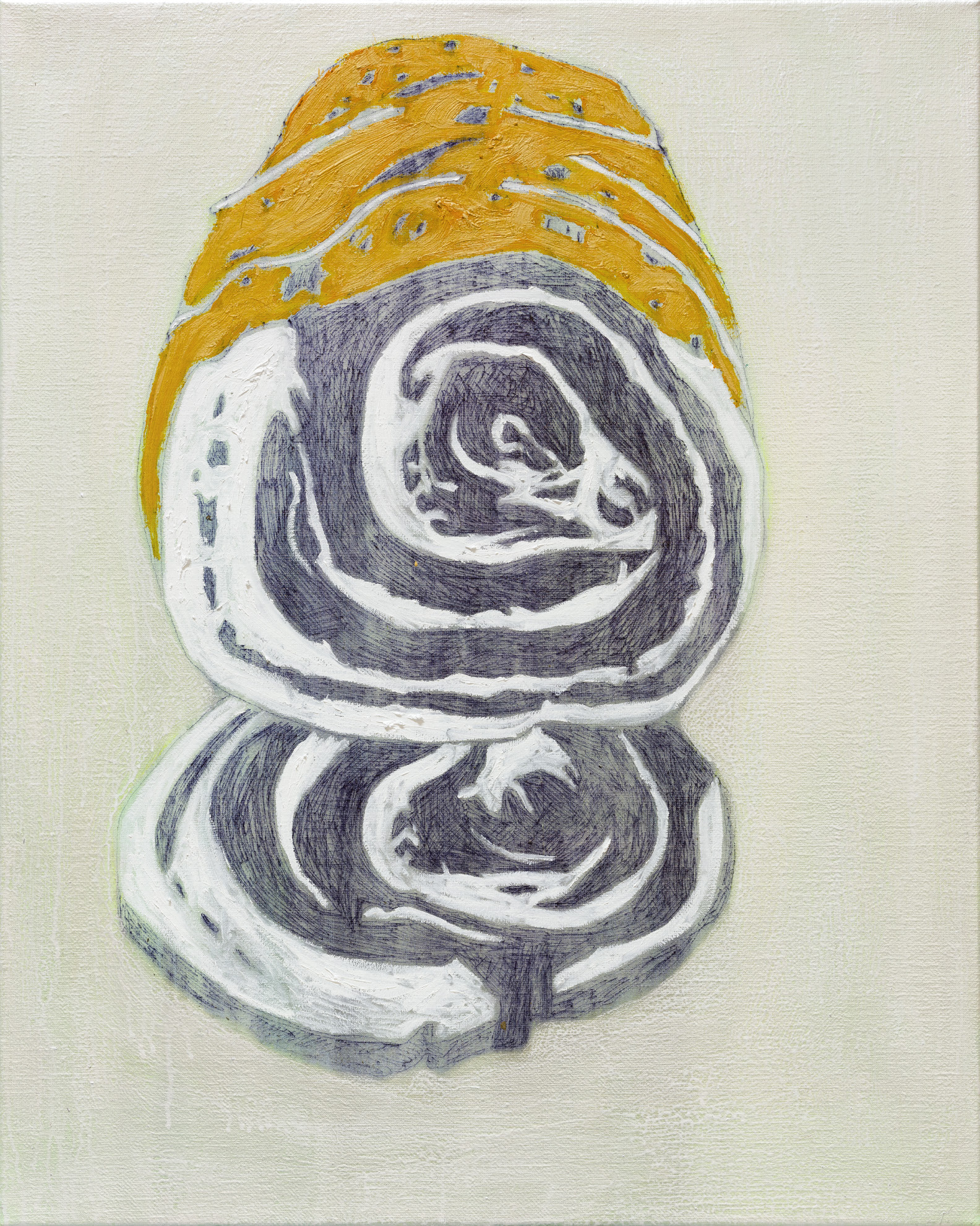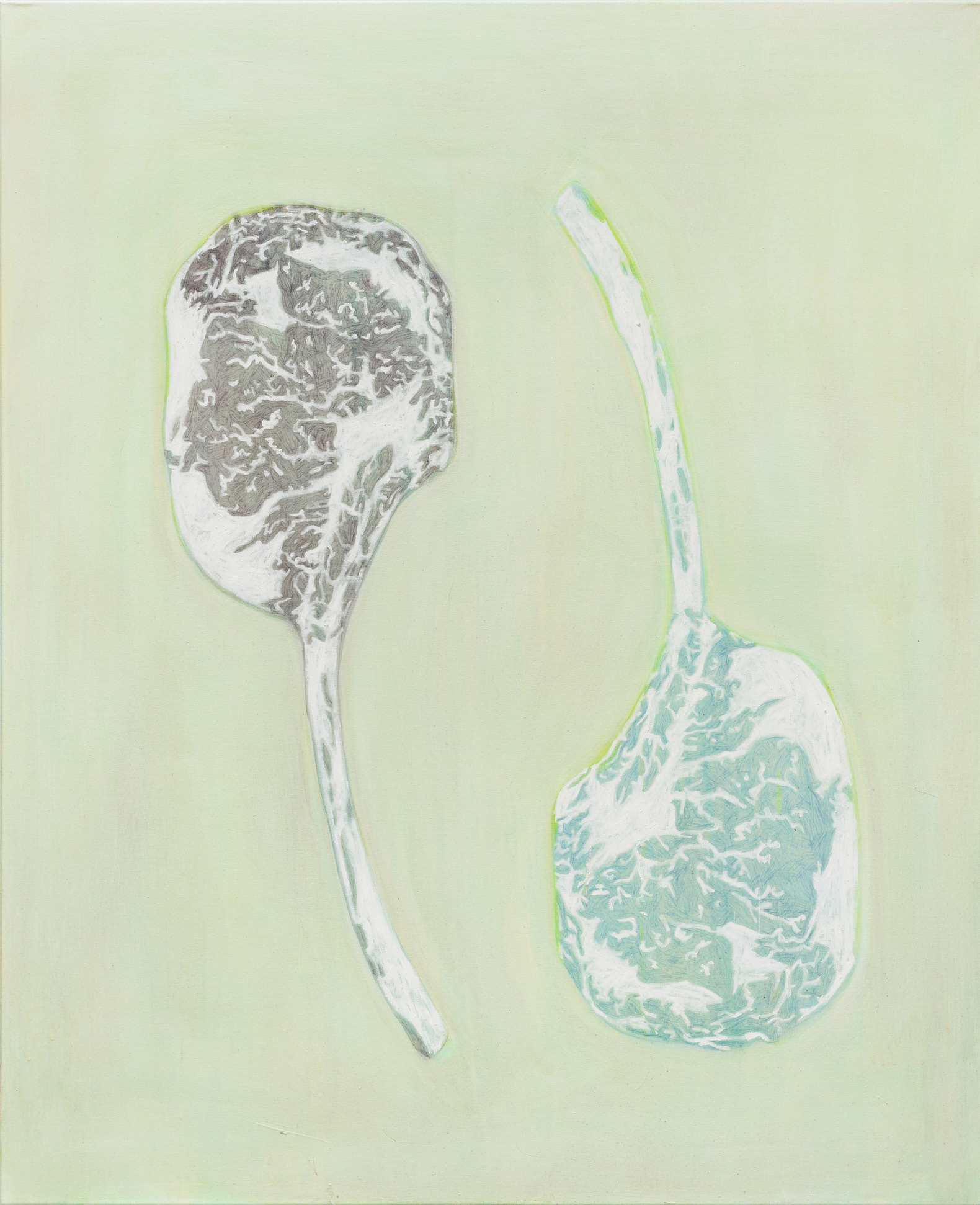Immer wieder das Privatleben/Again and again the private life
IMAGES
INFO
Christoph Matthes
Immer wieder das Privatleben
Duve, Berlin
15/09/2023 - 20/08/2023
Es fehlt etwas, in den Bildern von Christoph Matthes. In seiner ersten Einzelausstellung in
Berlin verhandelt der 1990 in Karlsruhe geborene und in Düsseldorf lebende Künstler die
Leerstelle als zentrales Motiv seiner malerischen Praxis.
Obwohl der Titel Immer wieder das Privatleben auf einen familiären, das heißt durch
Menschen geformten und von der Öffentlichkeit abgegrenzten sozialen Kontext verweist, ist
die Abwesenheit von belebten oder die Szenerie belebenden Figuren in den meisten
Gemälden der Ausstellung auf den ersten Blick evident. Der im Unterton leicht gereizte Titel
verspricht einen Blick hinter die Kulissen. Doch anstelle eines intimen Einblicks in das, was
wir normalerweise zu beschützen oder zu verbergen suchen, finden wir zunächst eine leblose,
bühnenhafte Szenerie vor. Mit dem Verzicht auf das Zeigen von Aktionen und Interaktionen
oder ihrer Spuren im Bildraum entsteht nicht nur eine lustvolle Disharmonie zum Titel, der
explizit auf das Leben im Privaten verweist, sondern findet vor allem auch eine Aufwertung
der dargestellten leblosen Objekte statt. Die Fokussierung auf sie weist ihnen augenzwinkernd
eine Musealität zu, die latent unverdient scheint, weil die Dinge massenhaft in den
bundesdeutschen Haushalten vorkommen. Die Konzentration auf Alltagsgegenstände in der
Kunst bei gleichzeitigem ironischem Blickwinkel auf die Coolness der Pop-Art-KünstlerInnen
verbindet die Arbeiten von Christoph Matthes mit dem Werk von wegweisenden MalerInnen
wie Michel Majerus.
Die Bildgestaltung entfernt den Bezug des Objektes auf Raum und Zeit. Auf diese Weise wird
die aus den Wohnzimmern entspringende Banalität des kleinbürgerlichen Alltags in ein
bildnerisches Vakuum gestellt und damit in eine passive Unbenutzbarkeit versetzt. Aus dieser
Situation heraus wird ihre Form aus einer Distanz heraus anschaubar. Die Objekte sind aus
den familiären Verstrickungen entrückt. Es ist ein schalkhaftes Spiel, das dabei entsteht. Der
Künstler nutzt die seit Duchamp allgemein bekannte Grundregel der künstlerischen Praxis,
die besagt, dass all das, was der Künstler zur Kunst erklärt, Kunst sei. Sogar wenn die Kunst
sich einen Witz daraus macht, dann doch auf eine scheinbar wenig aussagekräftige Biografie
und den Entwurf eines familiären Zusammenhangs abzuzielen, die in einer nicht sehr
aufregenden süddeutschen Kleinstadt ihren Ursprung haben könnte.
In den wenigen Arbeiten, in denen doch blasse Figuren den Bildhintergrund stellen, bleibt die
Leerstelle in den gesichtslosen Köpfen bestehen. Die Frontalität des Körpers und die
Hinwendung des Blicks der Figuren zum Publikum hin, liefert einen versteckten Hinweis auf
den Herstellungsprozess der Gemälde, hin der sich zu einer potenzierten Integrierung des
Privaten fortsetzt. Denn die Bilder beruhen auf Familienfotos. Der Blick zur BetracherIn hin,
entpuppt sich bei genauer Betrachtung als Blick in die Kamera. Die Figuren schauen durch
die Linse des Fotoapparats zu uns. Sie scheinen sich auf die Privatheit der Situation zu
verlassen und doch liegt ihnen auch eine seltsame Steifheit in den Gliedern, so als wären sie
nicht sie, sondern die objektivierte, posenhafte Schablone ihrer selbst.
Das für Christoph Matthes Arbeiten signifikante Bedienen am Alltag, spiegelt sich auch in der
Wahl der für die traditionelle Malerei ungewöhnlichen Mittel. Der Kugelschreiber spielt dabei
eine wichtige Rolle, zusammen mit einer speziellen Leimfarbe. Die malerische Technik hat
sich in vielen Jahren des Experimentierens und Professionalisierens zu einer Handschrift
entwickelt, deren Lässigkeit auch daraus resultiert, dass sie einen erkennbaren Pinselduktus
und die damit einhergehende Tendenz zum KünstlerInnenpathos verhindert. Stattdessen
kreiert die Technik einen bewusst gewählten kindlichen Charakter, der sich ebenso in den
Motiven, ihrer freien Kombination miteinander sowie auch in der eingesetzten Perspektive
auf die dargestellten Dinge wiederfindet. Die Leimfarbe verstärkt hingegen durch einen
leichten Glasureffekt das Gefühl die Darstellungen wären in eine raumundzeitlose Kontinuität
gegossen worden. Der Blick auf die malerischen Mittel macht deutlich, wie sehr formale und
inhaltliche Elemente in Christoph Matthes Arbeit eine tiefe Symbiose miteinander eingehen.
Text: Ania Kołyszko
Immer wieder das Privatleben
Duve, Berlin
15/09/2023 - 20/08/2023
Es fehlt etwas, in den Bildern von Christoph Matthes. In seiner ersten Einzelausstellung in
Berlin verhandelt der 1990 in Karlsruhe geborene und in Düsseldorf lebende Künstler die
Leerstelle als zentrales Motiv seiner malerischen Praxis.
Obwohl der Titel Immer wieder das Privatleben auf einen familiären, das heißt durch
Menschen geformten und von der Öffentlichkeit abgegrenzten sozialen Kontext verweist, ist
die Abwesenheit von belebten oder die Szenerie belebenden Figuren in den meisten
Gemälden der Ausstellung auf den ersten Blick evident. Der im Unterton leicht gereizte Titel
verspricht einen Blick hinter die Kulissen. Doch anstelle eines intimen Einblicks in das, was
wir normalerweise zu beschützen oder zu verbergen suchen, finden wir zunächst eine leblose,
bühnenhafte Szenerie vor. Mit dem Verzicht auf das Zeigen von Aktionen und Interaktionen
oder ihrer Spuren im Bildraum entsteht nicht nur eine lustvolle Disharmonie zum Titel, der
explizit auf das Leben im Privaten verweist, sondern findet vor allem auch eine Aufwertung
der dargestellten leblosen Objekte statt. Die Fokussierung auf sie weist ihnen augenzwinkernd
eine Musealität zu, die latent unverdient scheint, weil die Dinge massenhaft in den
bundesdeutschen Haushalten vorkommen. Die Konzentration auf Alltagsgegenstände in der
Kunst bei gleichzeitigem ironischem Blickwinkel auf die Coolness der Pop-Art-KünstlerInnen
verbindet die Arbeiten von Christoph Matthes mit dem Werk von wegweisenden MalerInnen
wie Michel Majerus.
Die Bildgestaltung entfernt den Bezug des Objektes auf Raum und Zeit. Auf diese Weise wird
die aus den Wohnzimmern entspringende Banalität des kleinbürgerlichen Alltags in ein
bildnerisches Vakuum gestellt und damit in eine passive Unbenutzbarkeit versetzt. Aus dieser
Situation heraus wird ihre Form aus einer Distanz heraus anschaubar. Die Objekte sind aus
den familiären Verstrickungen entrückt. Es ist ein schalkhaftes Spiel, das dabei entsteht. Der
Künstler nutzt die seit Duchamp allgemein bekannte Grundregel der künstlerischen Praxis,
die besagt, dass all das, was der Künstler zur Kunst erklärt, Kunst sei. Sogar wenn die Kunst
sich einen Witz daraus macht, dann doch auf eine scheinbar wenig aussagekräftige Biografie
und den Entwurf eines familiären Zusammenhangs abzuzielen, die in einer nicht sehr
aufregenden süddeutschen Kleinstadt ihren Ursprung haben könnte.
In den wenigen Arbeiten, in denen doch blasse Figuren den Bildhintergrund stellen, bleibt die
Leerstelle in den gesichtslosen Köpfen bestehen. Die Frontalität des Körpers und die
Hinwendung des Blicks der Figuren zum Publikum hin, liefert einen versteckten Hinweis auf
den Herstellungsprozess der Gemälde, hin der sich zu einer potenzierten Integrierung des
Privaten fortsetzt. Denn die Bilder beruhen auf Familienfotos. Der Blick zur BetracherIn hin,
entpuppt sich bei genauer Betrachtung als Blick in die Kamera. Die Figuren schauen durch
die Linse des Fotoapparats zu uns. Sie scheinen sich auf die Privatheit der Situation zu
verlassen und doch liegt ihnen auch eine seltsame Steifheit in den Gliedern, so als wären sie
nicht sie, sondern die objektivierte, posenhafte Schablone ihrer selbst.
Das für Christoph Matthes Arbeiten signifikante Bedienen am Alltag, spiegelt sich auch in der
Wahl der für die traditionelle Malerei ungewöhnlichen Mittel. Der Kugelschreiber spielt dabei
eine wichtige Rolle, zusammen mit einer speziellen Leimfarbe. Die malerische Technik hat
sich in vielen Jahren des Experimentierens und Professionalisierens zu einer Handschrift
entwickelt, deren Lässigkeit auch daraus resultiert, dass sie einen erkennbaren Pinselduktus
und die damit einhergehende Tendenz zum KünstlerInnenpathos verhindert. Stattdessen
kreiert die Technik einen bewusst gewählten kindlichen Charakter, der sich ebenso in den
Motiven, ihrer freien Kombination miteinander sowie auch in der eingesetzten Perspektive
auf die dargestellten Dinge wiederfindet. Die Leimfarbe verstärkt hingegen durch einen
leichten Glasureffekt das Gefühl die Darstellungen wären in eine raumundzeitlose Kontinuität
gegossen worden. Der Blick auf die malerischen Mittel macht deutlich, wie sehr formale und
inhaltliche Elemente in Christoph Matthes Arbeit eine tiefe Symbiose miteinander eingehen.
Text: Ania Kołyszko
There is something missing in the paintings of Christoph Matthes. In his first solo exhibition in
Berlin, the artist, who was born in Karlsruhe in 1990 and lives in Düsseldorf, negotiates the void as
a central motif of his painterly practice.
Although the title Again and Again Private Life refers to a familial social context, that is, one
formed by people and separated from the public, the absence of animated figures or figures
enlivening the scenery is evident at first glance in most of the paintings in the exhibition. The title,
slightly testy in undertone, promises a glimpse behind the scenes. But instead of an intimate
glimpse into what we normally seek to protect or conceal, we initially find a lifeless, stage-like
setting. By refraining from showing actions and interactions or their traces in the pictorial space,
there is not only a pleasurable disharmony with the title, which explicitly refers to life in private,
but above all there is also a valorization of the inanimate objects depicted. The focus on them
winkingly assigns them a museality that seems latently undeserved, because the things are found en
masse in German households. The focus on everyday objects in art, while at the same time taking
an ironic look at the coolness of Pop Art artists, connects the works of Christoph Matthes with the
work of pioneering painters such as Michel Majerus.
The pictorial design removes the object's reference to space and time. In this way, the banality of
petty bourgeois everyday life that springs from the living rooms is placed in a pictorial vacuum and
thus placed in a passive unusability. From this situation, their form becomes viewable from a
distance. The objects are removed from their familial entanglements. It is a mischievous game that
emerges. The artist uses the basic rule of artistic practice, generally known since Duchamp, which
says that all that the artist declares to be art is art. Even if the art makes a joke of it, then to aim at a
seemingly little meaningful biography and the draft of a family context, which could have
originated in a not very exciting small town in southern Germany.
In the few works in which pale figures nevertheless provide the background of the picture, the blank
space in the faceless heads remains. The frontality of the body and the turning of the gaze of the
figures towards the audience, provides a hidden hint of the production process of the paintings,
towards a potentiated integration of the private. For the paintings are based on family photographs.
The view towards the viewer turns out, on closer inspection, to be a view into the camera. The
figures look at us through the lens of the camera. They seem to rely on the privacy of the situation,
and yet there is also a strange stiffness in their limbs, as if they were not themselves, but the
objectified, pose-like template of themselves.
The significant for Christoph Matthes works serving the everyday life, is also reflected in the choice
of unusual for traditional painting means. The ballpoint pen plays an important role, together with a
special glue paint. The painterly technique has developed over many years of experimentation and
professionalization into a handwriting whose nonchalance also results from the fact that it avoids a
recognizable brushstroke and the accompanying tendency toward artist pathos. Instead, the
technique creates a consciously chosen childlike character, which is also found in the motifs, their
free combination with each other, and also in the perspective used on the things depicted. The glue
color, on the other hand, reinforces the feeling that the depictions have been cast in a spatio-
temporal continuity through a light glaze effect. The view of the painterly means makes clear how
much formal and content elements in Christoph Matthes' work enter into a deep symbiosis with
each other.
Text: Ania Kołyszko
Artist statement:
Again and again the private life is the conclusion of a three-year exploration with ballpoint pen and
distemper. A method that I originally used for works on paper and then for the canvas. I use this
technique to represent familiar motifs concretely. By washing out the ballpoint pen with spirit
combined with a pale color palette creates something rapturous. Like the feeling to remember
something past, which one has almost forgotten. The choice of the subject falls back to my
socialization in the periphery of the southern German middle class. Yet the images and titles are by
no means autobiographical. Rather, they are shaped by a fascination for the rituals, foibles, and
intergenerational dynamics that play out on the stage of middle-class domesticity.
Berlin, the artist, who was born in Karlsruhe in 1990 and lives in Düsseldorf, negotiates the void as
a central motif of his painterly practice.
Although the title Again and Again Private Life refers to a familial social context, that is, one
formed by people and separated from the public, the absence of animated figures or figures
enlivening the scenery is evident at first glance in most of the paintings in the exhibition. The title,
slightly testy in undertone, promises a glimpse behind the scenes. But instead of an intimate
glimpse into what we normally seek to protect or conceal, we initially find a lifeless, stage-like
setting. By refraining from showing actions and interactions or their traces in the pictorial space,
there is not only a pleasurable disharmony with the title, which explicitly refers to life in private,
but above all there is also a valorization of the inanimate objects depicted. The focus on them
winkingly assigns them a museality that seems latently undeserved, because the things are found en
masse in German households. The focus on everyday objects in art, while at the same time taking
an ironic look at the coolness of Pop Art artists, connects the works of Christoph Matthes with the
work of pioneering painters such as Michel Majerus.
The pictorial design removes the object's reference to space and time. In this way, the banality of
petty bourgeois everyday life that springs from the living rooms is placed in a pictorial vacuum and
thus placed in a passive unusability. From this situation, their form becomes viewable from a
distance. The objects are removed from their familial entanglements. It is a mischievous game that
emerges. The artist uses the basic rule of artistic practice, generally known since Duchamp, which
says that all that the artist declares to be art is art. Even if the art makes a joke of it, then to aim at a
seemingly little meaningful biography and the draft of a family context, which could have
originated in a not very exciting small town in southern Germany.
In the few works in which pale figures nevertheless provide the background of the picture, the blank
space in the faceless heads remains. The frontality of the body and the turning of the gaze of the
figures towards the audience, provides a hidden hint of the production process of the paintings,
towards a potentiated integration of the private. For the paintings are based on family photographs.
The view towards the viewer turns out, on closer inspection, to be a view into the camera. The
figures look at us through the lens of the camera. They seem to rely on the privacy of the situation,
and yet there is also a strange stiffness in their limbs, as if they were not themselves, but the
objectified, pose-like template of themselves.
The significant for Christoph Matthes works serving the everyday life, is also reflected in the choice
of unusual for traditional painting means. The ballpoint pen plays an important role, together with a
special glue paint. The painterly technique has developed over many years of experimentation and
professionalization into a handwriting whose nonchalance also results from the fact that it avoids a
recognizable brushstroke and the accompanying tendency toward artist pathos. Instead, the
technique creates a consciously chosen childlike character, which is also found in the motifs, their
free combination with each other, and also in the perspective used on the things depicted. The glue
color, on the other hand, reinforces the feeling that the depictions have been cast in a spatio-
temporal continuity through a light glaze effect. The view of the painterly means makes clear how
much formal and content elements in Christoph Matthes' work enter into a deep symbiosis with
each other.
Text: Ania Kołyszko
Artist statement:
Again and again the private life is the conclusion of a three-year exploration with ballpoint pen and
distemper. A method that I originally used for works on paper and then for the canvas. I use this
technique to represent familiar motifs concretely. By washing out the ballpoint pen with spirit
combined with a pale color palette creates something rapturous. Like the feeling to remember
something past, which one has almost forgotten. The choice of the subject falls back to my
socialization in the periphery of the southern German middle class. Yet the images and titles are by
no means autobiographical. Rather, they are shaped by a fascination for the rituals, foibles, and
intergenerational dynamics that play out on the stage of middle-class domesticity.

